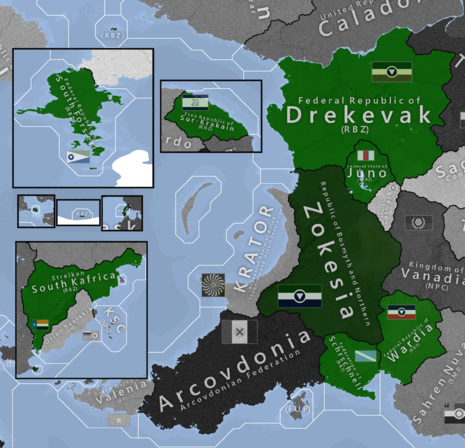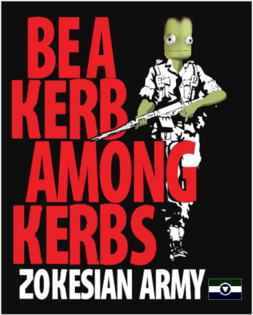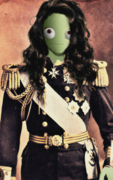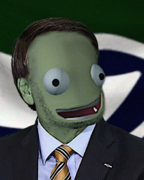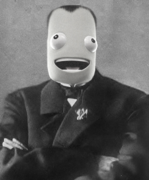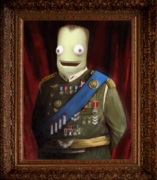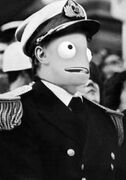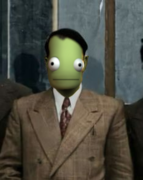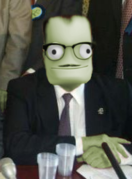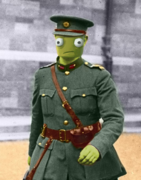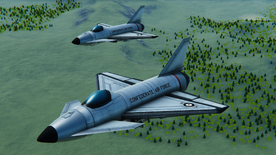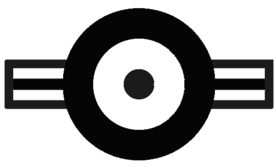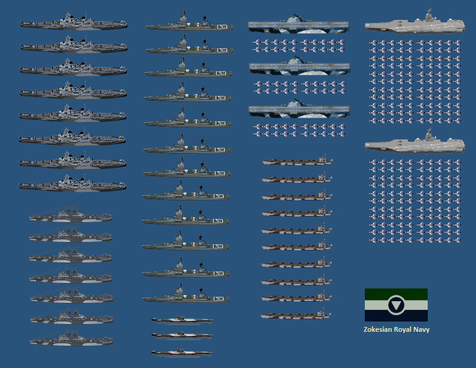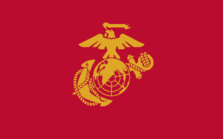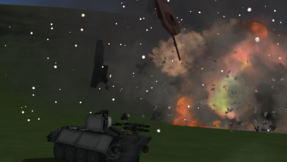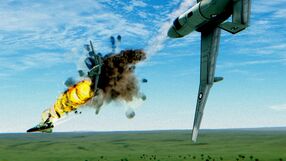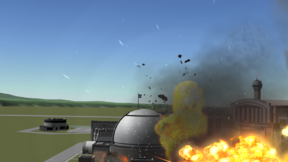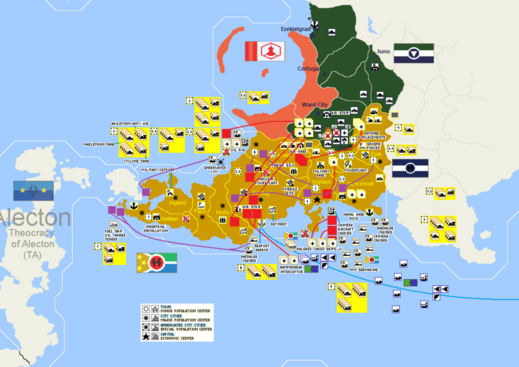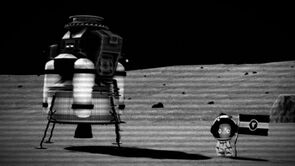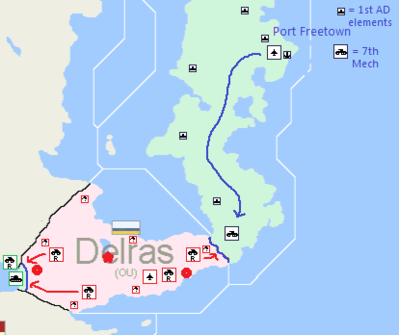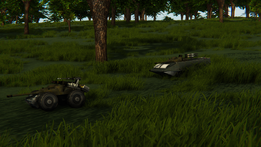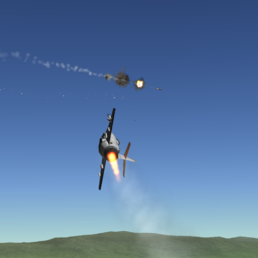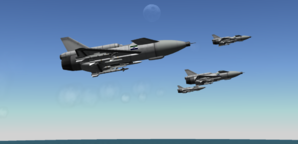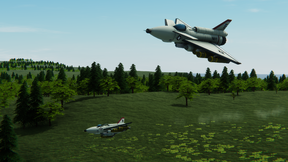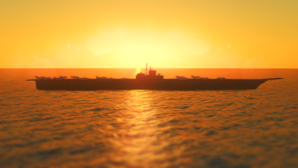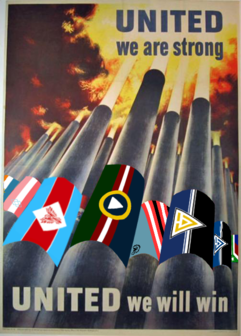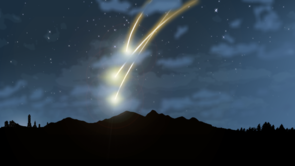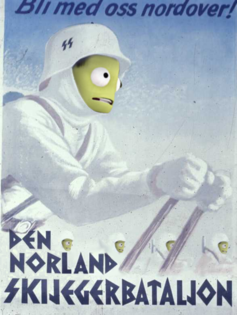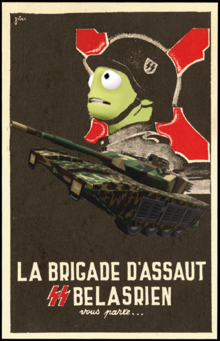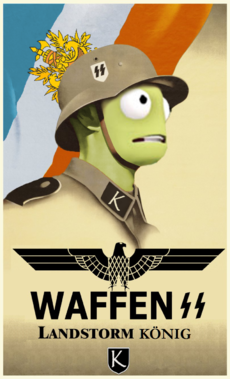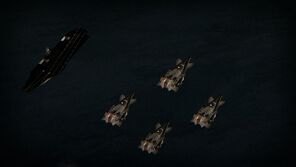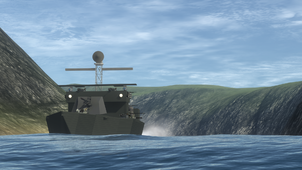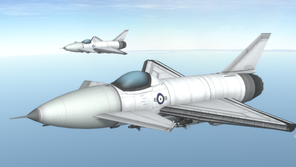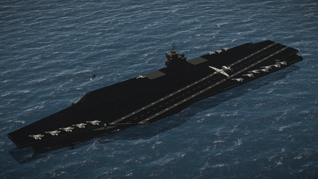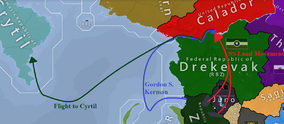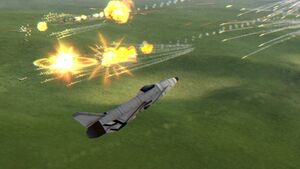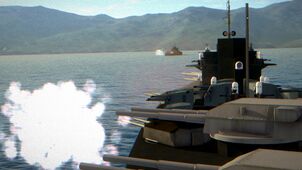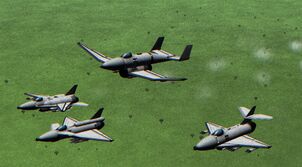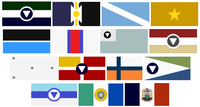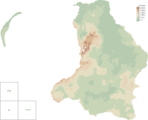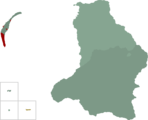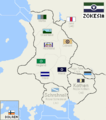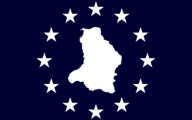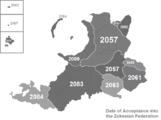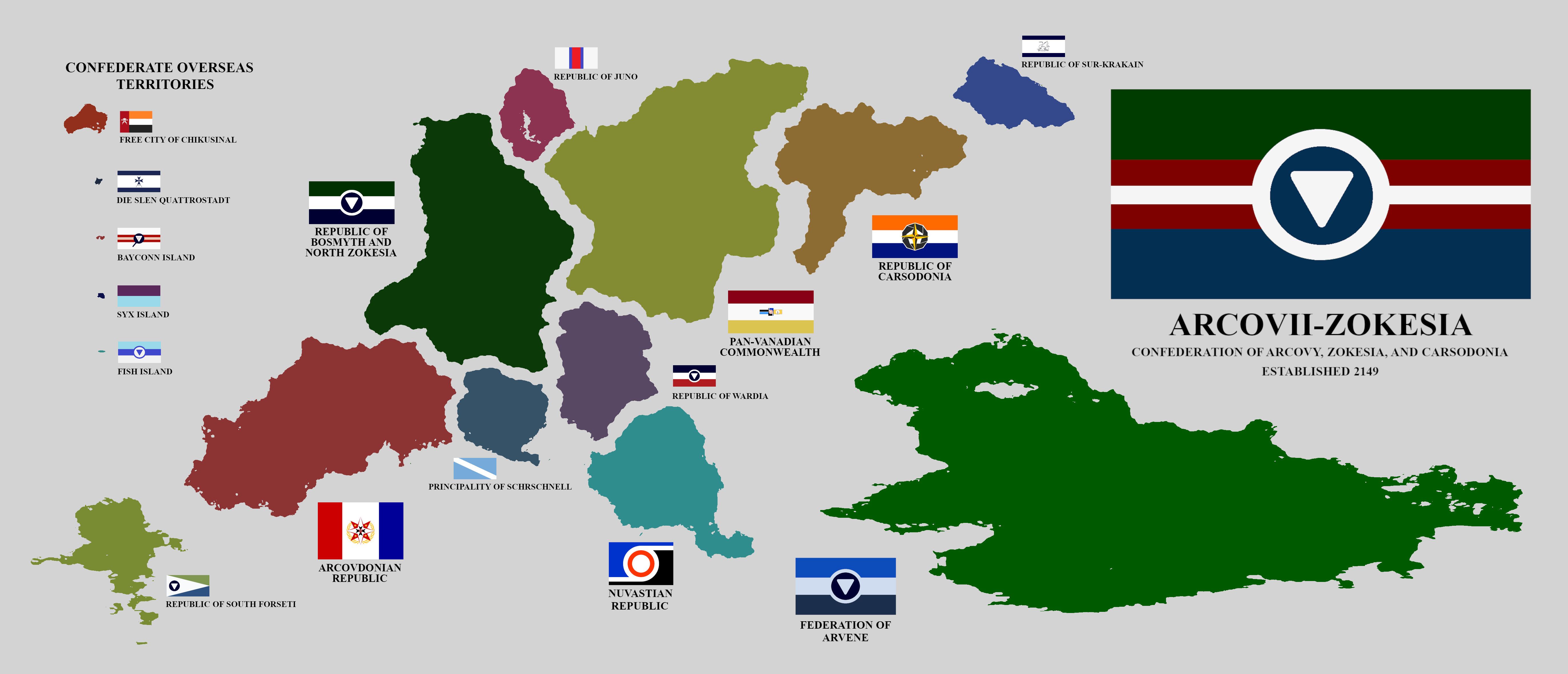Zokesia: Difference between revisions
| Line 739: | Line 739: | ||
The surviving members of the Royal House I'l Sil of Puge-Tatar returned to Wardia in 2179 to guide the troubled state in pushing back the violence that was stemming over the border from Pan-Vanadia. With funding from the Zokeisan central bank, the new Wardian Puge-Tatar hired the Stahlsieg once again at the lament of the Zokesians. The Stahlsieg enacted a great campaign of cleansing accross Nuvastia and Pan-Vanadia, initially sweeping accross the great deserts in five long years of fighting before ruling the provinces with an iron fist of terror, collecting taxes on bloody raids from town to town. By 2196, the state of Greater Puge-Tatar had been formed and stretched 50km east and 40 km north of its old borders, and its influence reached deep into the heart of the desert. On paper, the Zokesian Confederacy still controlled the Kolus desert, but many tribes answer to either the Stahlsieg, the Putaryans, or Zokesia, but are mutually exclusive. Trade convoys are armored and villages are walled to prevent raids, and much of the Zokesian national guard is stationed in the desert to keep trade open to key cities. The nation of Carsodonia, now isolated from the rest of the Commonwealth, fell into the sphere of Aontas and gradually receeded from Zokesian political circles, officially declaring independence in 2184 without fioring a shot. |
The surviving members of the Royal House I'l Sil of Puge-Tatar returned to Wardia in 2179 to guide the troubled state in pushing back the violence that was stemming over the border from Pan-Vanadia. With funding from the Zokeisan central bank, the new Wardian Puge-Tatar hired the Stahlsieg once again at the lament of the Zokesians. The Stahlsieg enacted a great campaign of cleansing accross Nuvastia and Pan-Vanadia, initially sweeping accross the great deserts in five long years of fighting before ruling the provinces with an iron fist of terror, collecting taxes on bloody raids from town to town. By 2196, the state of Greater Puge-Tatar had been formed and stretched 50km east and 40 km north of its old borders, and its influence reached deep into the heart of the desert. On paper, the Zokesian Confederacy still controlled the Kolus desert, but many tribes answer to either the Stahlsieg, the Putaryans, or Zokesia, but are mutually exclusive. Trade convoys are armored and villages are walled to prevent raids, and much of the Zokesian national guard is stationed in the desert to keep trade open to key cities. The nation of Carsodonia, now isolated from the rest of the Commonwealth, fell into the sphere of Aontas and gradually receeded from Zokesian political circles, officially declaring independence in 2184 without fioring a shot. |
||
| + | |||
| + | In 2085, Empress Magdalene Vikus-Ward passed away peacefully at the age of 84, after 58 years on the Throne of Zokesia. She was loved by millions accross the confederacy, and as with her mother, she was given a state funeral after a journey accross Zokesia, giving her loyal subjects a chance to say goodbye one last time. She was succeeded by her daughter, Elizabeth Vikus-Ward, 43, and her surviving son, 29-year old Maximillian Vikus-Ward, who was coronated and became Emperor in a massive event in the old Cathedral in Ezekielgrad. Maximillian has been known to be a traditional man, studied in the old historians of the day, and a devout follower of the Church of the God-Emperor Vikus, attending mass twice a week and showing up at many charity events. His greatest dream is to, in his words, "Follow the footsteps of my Grandfather and kindle the spirits of Kerbin into glory." |
||
=== Zokesian Stars === |
=== Zokesian Stars === |
||
The Federal Republic of Rhodes on Duna expanded tenfold in a decade, and the allready booming Wardian Korfu was becoming nearly as big in population as Zokesia herself. Now joined with the former Imperial Union colony on Minmus, Wardian Korfu became the center for mining, banking, and economic growth amongst the stars, the position of Wardian Korfu as the Confederacy's gateway to the stars saw it become the most advanced colony in the system, with shipyards and factories dotting every spot of land on the moon. vast Ice Factories shipped water offworld, and the other planets of the Sol system flourished on the new frozen currency. The Esian Principality of Eeloo was founded in 2188, leading to a new source of Ice and trade. Many hailed it as the "new Wardian Korfu" as it was seemingly the gateway to what lay beyond - the star systems outside of Sol herself. |
The Federal Republic of Rhodes on Duna expanded tenfold in a decade, and the allready booming Wardian Korfu was becoming nearly as big in population as Zokesia herself. Now joined with the former Imperial Union colony on Minmus, Wardian Korfu became the center for mining, banking, and economic growth amongst the stars, the position of Wardian Korfu as the Confederacy's gateway to the stars saw it become the most advanced colony in the system, with shipyards and factories dotting every spot of land on the moon. vast Ice Factories shipped water offworld, and the other planets of the Sol system flourished on the new frozen currency. The Esian Principality of Eeloo was founded in 2188, leading to a new source of Ice and trade. Many hailed it as the "new Wardian Korfu" as it was seemingly the gateway to what lay beyond - the star systems outside of Sol herself. |
||
| + | |||
| + | The final elections before the end of the 22nd century saw the Zokeisan Royal Party take charge once again, following multiple terraforming attempts on Duna failed at the cost of trillions of Thalers. Midas Van Tollen was elected on a platform of reform and return to Kerbin-centric thought, as many issues back at home not least of all the Pan-Vanadian tribal conflicts spurring the vote in his favor. Following meager success, at the dawn of the 23rd century, the polls looked to swing away from the Royal Party once again. However, in an unexpected move, His Majesty declared, taking a page from the famous Francisco Grail, "If Zokesia is to be, it will be not a World Power, but a Solar Power - Or not at all." With this, he quickly outlined a radical plan to modernize the remaining Kerbin territories of Zokesia to begin the transition to a truly spacefaring peoples. What his reign will do to realize this goal is unknown, but with the backing of Zokesia's longtime ally the UIF, anything could be possible as the nation enters this grand 23rd century. |
||
== Gallery == |
== Gallery == |
||
Revision as of 22:35, 17 January 2023
|
Republic of Bosmyth and North Zokesia
|
|||||
|---|---|---|---|---|---|
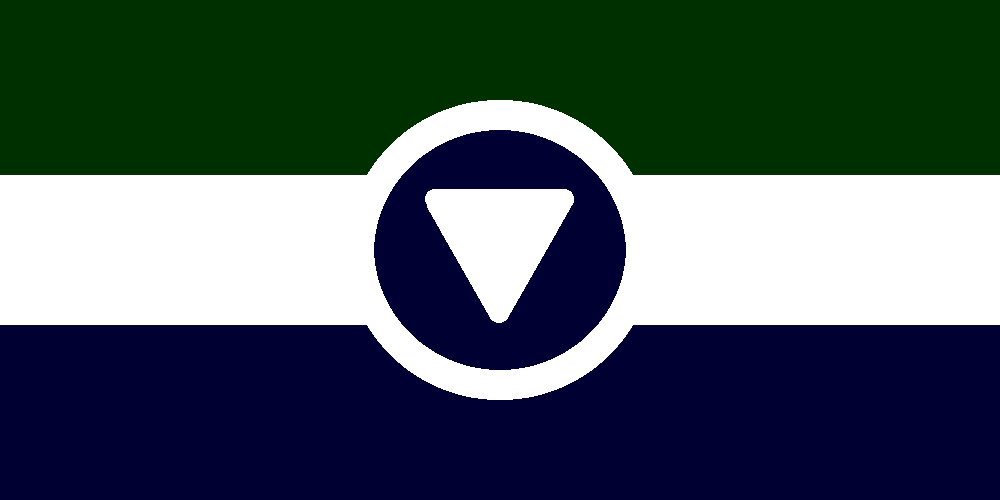 |
|||||
| The Green of the northern lands of Bosmyth, the Royal Blue of North Zokesia, and the White of the Eastern Desert in between. | |||||
| Motto | "Pacem Bello" | ||||
| Common Name | Zokesia | ||||
| Anthem | "Zokesians Never Die" | ||||
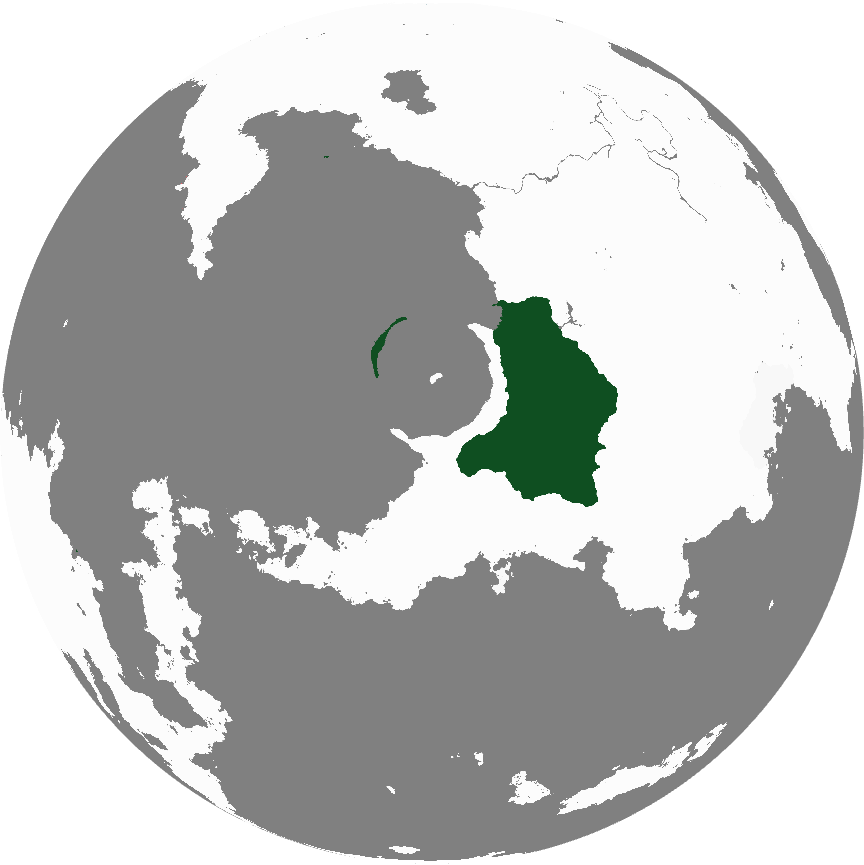 |
|||||
| Official languages | Zokesian | ||||
| Currency | Zokesian Thaler | ||||
| Politics | |||||
| Capital | Ezekialgrad | ||||
| Government | Federal Parliamentary Republic | ||||
| Foundation | 2057 (Current Constitution) 1928 (Zokesian OKTO) 542 (Imperium Zokesium) 421 BC (Independence from Kjolsen) ~900 BC (Zokecyrland) |
||||
| Preceded by | Charum, Neo-Zokesia | ||||
| Demography | |||||
| Ethnicities | 90.2% Zokesian 5.8% Ravnian 1.7% Pugarayan 1.2% Baskian 1.1% Other |
||||
| Population | 13,445,742 | ||||
| Area | 42,880km^2 km² | ||||
Zokesia, officially known as the Federal Republic of Bosmyth and North Zokesia (Zokesian: Bundesrepublik Bosmyth und Nordzokesia), is a prosperous nation of predominately farmland located in the East of the Crater bay. Bordered by Surnay in the north, Malafranz in the west, Arcovy to the south, and Nuvalka in the East, Zokesia is almost entirely landlocked. Only the capitol of Ezekielgrad and Freetown are free to trade on the open ocean to the north.
Government
The Zokesian Federal Government is made up of a single Lord's Parliament, which is voted in by the people every five years. There are many parties and coalitions are usually required to win a majority, from which a President and Chancellor is decided amongst the victors. The current President is Mitchell Shelby O'Till, and the current Chancellor is Winslow Harding. The Chamber of Weights and Measures handles economic and judicial matters, and the military is led by Zokesian High Command, at its head the President.
Each province gets 8 representatives in the Parliament, with Federal States receiving 4. There are a total of 96 members of Parliament.
Provinces
Zokesia's constitution gives power entirely to the federal government. The interior states of Zokesia are locally run at the county level for issues of policing and community but otherwise do not operate autonomously. Sometimes known as "Provinces" these groups have little influence beyond their own sphere, though the Federal government usually takes efforts to keep red tape at a minimum so the provinces can operate as efficiently as possible. The state of Ezekielgrad is run by the Federal Government directly as it contains its capitol.
Zokesia also has two interplanetary colonies, Wardian Korfu and The Federal Republic of Rhodes, population 4.3 million and 1.7 million respectively.
Economy and Infrastructure
Zokesia's economy is built on its bountiful farmland. From Ezermont to Zok large swaths of countryside make Zokesia the breadbasket of Old Kolus. The cities are often the hub of cultural and commercial trade, with paved 2-lane highways stretching north to south connecting the large areas of Zokesia.
Economy
Farming is primarily carried out by small communities or local families, operating modern technology which allows them to utilize large swaths of farmland. Food is sold to the commercial farmer's unions, which ship it along the highways to the cities for processing and distribution. the size of the farms usually mean small townships are formed away from the cities where groups of families live and commune to come together as a community, off the highways.
Manufacturing and service industry dominate the northern cities. Designed to process exports south, these cities take raw materials and either ship them out or turn them into parts, equipment, or exports. Here in the north coal, iron, and steel industries boom and the Oil reserves of Zokesia are located, allowing the factories to continue pumping out materiel for the people of Zokesia. It is here that Military Industry, and the bulk of the raw materials needed for the arms manufacture, is located.
To the east, the city of Juno houses the high tech development centers of military companies such as Ward Industries, Zokesia Skunkworks, and Extramus Military Techology. The deserts to the east are weapons test ranges and training centers.
The southern cities are removed from the industrious north, and instead house a thriving service industry and medium-size industry. Fine art and trade professions ship goods out to the north and export out of the country. With the addition of Schrschnell and Kothen to Zokesian Statehood, trade from the northern cities flows through Zok and Esia to reach ports in the south, as well as the millions of Zokesians living in the states. Zok and Esia's arts and goods travel far and wide as a result, and fetch high price outside Zokesia's borders.
Federal States
The Federal States of Zokesia are nation-states outside of the old Zokesian border, and include Schrschnell, Juno, Drekevak, Wardia, Sur-Krakain, South Forseti, Bayconn Island, Strelkan Suid-Kafrica, Hout, Slen, and Fish Island. These nations pledge economic and political support to Zokesia and answer directly to the federal government. As long as the Republic of Zokesia acts lawfully and in accordance with the people the states are required to follow Zokesia's laws and edicts. The leaders of these states are hand picked and are loyal to the Prime Minister. Elections are every 5 years with the prime minister being decided by the winning party or parties should a coalition be required for majority.
The largest of the Federal States, Drekevak, is the former Surnish Muhattan Empire, fallen in the days of the Burr Federation war of 2141. Internal pressures and a Zokesian-backed Coup helped topple the state, its successor immediately surrendering to the Zokesian government and helping usher in a peaceful transition to statehood and stability under a Surn-Zokesian common government. Also born out of this coup was Juno, which briefly was occupied by the Stahl Sieg before being liberated in 2143.
Schrschnell, the oldest of the Zokesian Federal States, has been with the nations since 2063, when it broke free of then-Sanctum and was settled by Zokesians, who over time developed the nation into a thriving economic success, thanks to its large ports and trade proximity to Zokesia. To the east, a similar settlement of Wardians and Sur-Zokesians turned the Nuvastian province of Wardia into a Zokesian prospect, and when the former nation fell to Sahr in 2141 it broke free and joined its Zokesian brothers as a Federal State.
Sur-Krakain formed out of a deal with Arkeria, as its people desired a return to old values, and looked to their ancestral benefactor, Zokesia, as an ally. The nation remains sovereign, but is protected by Zokesian naval and air assets and enjoys free trade relations as a member of the Zokesian Confederacy.
South Forseti was a backwoods, barren landscape before the dust bowl of 2135. in the years following, thousands of Zokesians flooded into the military-occupied state and settled it as a homeland, where cattle, sheep, and fishing became the dominant economic factors. The strategic importance of the strait also guarantees a Zokesian presence at all times in the area.
The Freeports of Hout and Slen in Laveska were acquired by Zokesia when Surnay surrendered, the Strelkan and Tekkian populations finding solitude with the Zokesian way of life and economic freedoms. The small ports are central trading hubs for Zokesian exports, and foreign imports making their way into Zokesia proper. The little trading ports reduce the tiem and money required to ship bulk products overseas to foreign ports, when they can be instead shipped to Zokesian strongholds for trade directly to outside nations.
Strelkan South Kafrica is a blend of Zokesian Ex-patriots, minority ethnic Strelkans, Tekkians, and Aenians. The majority Grestinian population has no voting rights but do enjoy a better standard of living than most on the Kafrican continent, thanks to the renewed Zokesian trade in the area.
Bayconn island is the ancestral homeland of the Sur-Zokesian race, and is regarded as holy ground. A naval and air base on the island also protect Zokesian trade to the northern territories and Burr.Fish Island is the second farthest Western territory of the Zokesian Federation. Its proximity with Kerborg allows trade to go through the Baskay seas and for the Zokesian Navy to operate far beyond what its normal range limits would be.
Syx Island is at the mouth of the Owilan River, just northwest of Fish Island. It was given to Zokesia in an agreement with Anixa in 2144.
Commercial Companies
Zokesia features multiple high value companies thanks to the open market and constant demand for new military contracts. There are many manufacturing industries in the north of Zokesia, and provides the raw power output to fuel the ever growing Zokesian economy.
Ward Industries produces aircraft, weapons, and other high tech devices for the Zokesian Military. Among their designs are the Dingo multirole transport.
GreyStone is a Zokesian multi-national investment company based in Ezekielgrad. Founded in 2062, initially as a risk management and fixed income institutional asset manager, GreyStone is the world's largest asset manager, with THA$10 trillion in assets under management as of January 2159.[3] GreyStone operates globally with 70 offices in 30 countries, and clients in 100 countries.[4] Along with Vikusgard and Stahl Sieg, GreyStone is considered to be one of the Big Three index fund managers that dominate NEOCON.
Sun Rifle Company produces small arms and manufactured the ZAR-3, ZAR-5, and other light arms For the Zokesian Military.
Zokesia Skunkworks is the oldest and most famous Zokesian company and is actually a commercial branch of the Zokesian government, which maintains both federal and commercial contracts and investments and works on the highest black projects.
Standard Oil of Zokesia is the largest fossil fuel and natural gas producer in Kolus. Standard Oil of Zokesia has been an integral part of Zokesian economics as well as politics, most notably 2060s onwards.
Government
The Presidents (the position was renamed from Prime Minister in 2083) and Chancellors of Zokesia hold executive power and are elected by a straight majority of Parliament after the general elections.
The President is in charge of the daily foreign policies of the nation, the Commander-in-Chief of the military, and the highest official in the nation. The President is tasked with maintain the ship of state in the world, meeting with other leaders and supporting the interests of the nation on a global stage. In the domestic regions, the President gives rallying speeches and oversees official games and events inside the nation, and has direct control of the nation's federal strategic reserves and space assets.
The Chancellor oversees domestic issues, meets with the parties and bridges the gap in parliament between parties to push through legal issues and argue on the President's behalf. Domestically, the Chancellor is the Chief of Police, and is responsible for the handing out of government contracts at a state-wide level.
| President | Party | Chancellor | Party | Term | |
|---|---|---|---|---|---|
| 1st | Kian Rhodes Smith | Bosmynthians United | None | None | 2057 - 2060 |
| 2nd | HM. Ella II of Ward | Zokesian Royal Party | None | None | 2060 - 2075 |
| 3rd | Markus Bolsan Kolsonaro | Farmer's Coalition | None | None | 2075 - 2080 |
| 4th | Albert Natter Yosif | Social Republicans | Francisco Grail | Steel Pact | 2080 - 2082 |
| 5th | Francisco Grail | Steel Pact | Gen. Gordon Simon Kirman | Steel Pact | 2082 - 2093 |
| 6th | Gen. Gordon Simon Kirman | Steel Pact | Gen. Gordon Simon Kirman | Steel Pact | 2093 - 2095 |
| 7th | HM. Ella II of Ward | Neo-Royal Party | Gen. Gordon Simon Kirman | Steel Pact | 2095 - 2100 |
| 8th | Francisco Grail | Steel Pact | Gen. Gordon Simon Kirman | Steel Pact | 2100 - 2110 |
| 9th | Gen. Gordon Simon Kirman | Steel Pact | Lord Adm. Enoch Fournloke II | Steel Pact | 2110 - 2115 |
| 10th | Lord Adm. Enoch Fournloke II | Steel Pact | Gen. Gordon Simon Kirman | Steel Pact | 2115 - 2120 |
| 11th | Boulton Graves | Scientific Exploratory Research Group | Gary Martin Geigenheart | Greens | 2120 - 2130 |
| 12th | John Kallan Kurrman | Zokesian Royal Party | Bobby Ryan Carriliel | Zokesian Royal Party | 2130 - 2135 |
| 13th | Herbert Mundarius | Greens | John Kallan Kurrman | Zokesian Royal Party | 2135 - 2140 |
| 14th | John Kallan Kurrman | Zokesian Royal Party | Barthollemu Cillgalli, Winslow Harding | Greens, Zokesian Royal Party | 2140 - 2150 |
| 15th | Winslow Harding | Zokesian Royal Party | Martin Robert Bohrner | Zokesian Royal Party | 2150 - 2155 |
| 16th | Mitchell Shelby O'Till | Arcovii-Zokesia-Socialista | Winslow Harding | Zokesian Royal Party | 2155 - 2160 |
| 17th | Jack Fournloke Kurrman | Zokesian Royal Party | Kerbolt Van Hart | New Green Party | 2160 - 2163 |
| 18th | Kerbolt Van Hart | New Green Party | General Thurmond Gratz | Zokesian Royal Party | 2163 - 2165 |
| 19th | General Thurmond Gratz | Zokesian Royal Party | Steyner Rychsmannof, Goose Hillrole | Zokesian Royal Party, Zokesian Centrists | 2165 - 2175 |
| 20th | Goose Hillrole | Zokesian Centrists | Midas Van Tollen, Thatcher Boris Borrsam | Zokesian Royal Party, New Green Party | 2175 - 2190 |
| 21st | Midas Van Tollen | Zokesian Royal Party | Thatcher Boris Borrsam | New Green Party | 2190 - 2195 |
| 22nd | HM. Maximillian Vikus-Ward | Zokesian Royal Party | Gregory Kamfer | Zokesian Royal Party | 2195 - 2200 |
Military
The Zokesian military is a combat tested and venerable service. The military is led by the Zokesian High Command, a series of Generals, advisors, and number crunchers who deliberate and dictate military doctrine, issue commands, and lead campaigns against Zokesia's enemies. The military history of Zokesia is deeply intertwined with the nation's history, with some of its most esteemed leaders rising through the ranks of the army or navy before taking control of the national helm.
Air Force
The Zokesian Royal Air Force is comprised of 5 Fighter Groups, tasked with Air defense of Zokesia. Each fighter group has 3 separate squadrons of fighter aircraft. The strength of each fighter group is 10 Z-80, 10 F-52J Kargadan, and 10 "Kaminari". Additional support from foreign imports began in 2140 and increased steadily during the Zokesian Civil War, with outside aircraft making up over 50% of the Air Force by 2144.
The Z-80 has been a staple of Zokesian frontline fighter service in one form or another since 2065, and the newest versions are dedicated air to air fighters with the purpose of taking air superiority from the enemy, though they are able to load ground ordinance once their primary task has been acheived. Alongside these, the Kaminari likewise is air superiority oriented and has little to no air to ground capability. The F-52J Kargadan, however, is designed to be a dedicated multirole aircraft, capable of precision strikes on ground targets, CAS, SEAD, DEAD, and air defense. A multi-purpose tool, the F-52J is well liked by its pilots.
Bomber Command is the name given to the Zokesian strategic command overseeing long range bombing operations. Their primary tool is the B-52, though in the past B-100 blackouts, V-4s, and other aircraft have been used for the purpose. 1st Bomber Squadron, based in Freetowne, has 5 Heavy bombers at their disposal and act as Zokesia's standoff deterrent to opposing nations.
The Zokesian Air Force has seen battle both at home and abroad, participating in the Zoke-Sovie War, the Doren War, Red Horde War, Doren War, 1st and 2nd Continental War, and many other operations.
The Zokesia Navy began as a four Transport barges for naval-based land invasion. To protect the transports, a dozen Escort ships bolstered the fleet and allowed defensive operations around Zokesia's coasts. For much of the 21st century, the Zokesian Navy suffered from lack of budget for surface ships, and its greatest strength was fleet carriers with which to project power to far reaches of the globe.
The formation of Arkadii-Zokesia saw an influx of designs and a return to a large standing fleet, but this was all but wiped out by mechanical neglect and lack of parts during the blockade of 2090. With the development of the Morser class battleship with Orion and Phoenia, the Zokesian navy lept forward lightyears in offensive firepower on the open ocean. Now the fleet was no longer forced to rely solely on airpower to defend itself and carry out its mission. The 22nd century saw the Zokesian navy explode into a massive force, and during the Gallante war it tripled in size. Its peak was in 2136, when the 26th and final Morser was built.
Over the past two decades, the fleet has returned to a more balanced force, and today, the Zokesian navy operates a primarily surface fleet with heavy attack aircraft in anti-sea and close air support roles, supported by heavy battleships and guided missile destroyers. Eight battleships support two fleet carriers, the ZNS Imperator Drekevak and the ZNS Emperor Zeroth, and are protected by destroyers, sub chasers, and submarines. Many ships have been bought from outside nations, with Zokesian naval officers choosing only the highest quality ships for their fleet.
The most famous action in recent history by the Zokesian Royal Navy took place in 2148, when Emperor Zeroth and the combined fleet took North Point from Arcadia during the Reclamation war. In 180 air-to-ground and 140 air-to-air sorties, Zokesian and UIF naval aviators had accounted for four battleships, 110 torpedo boats, ten OPVs, an arkadii-soyuz carrier, and over 110 Arcadian fighters. they had suffered just 20 fighters lost in the process. The battleships saw open combat against equal Arcadian vessels, sending 4 to the bottom and scattering the enemy. It was the first time the Zokesian Navy had entered a surface engagement of battleships since the founding of the nations in 2057, and they came out on top.
The Zokesian Royal Navy is comprised of 8 battleships, 2 fleet carriers, 12 guided missile destroyers, 7 submarine chasers, 3 submarines, and 8 transports, which are usually in the custody of the Zokesian Marine Corps. The Zokesian Naval Aviation is made up of 20 fighter and 4 support squadrons, with 120 K-52C Kargadan and 80 Kaminari aircraft. The support squadrons, being 21st and 22nd VBQ, operate 10 Z-5 Medium bombers each, and are tasked with anti-ship and strategic operations, while the final two squadrons operate MZ-22 transport aircraft and EF-4 Skyshield AWACS, for command and control of naval territory and aircraft direction.
Zokesian Marine Corps
Founded in 2055 in a bar in Ezekielgrad, the Zokesian Marine Corps was created to protect the shipping of Zokesian city-state Ward on the crater sea, after pirates were taking a toll on their profits. The outbreak of war with Sanctum and resulting independence secured the Zokesian Marine Corps a permanent position as the designated troops for naval invasion across Kerbin. In 2062, the Zokesian Marine Corps landed in Delras to overthrow the communist regime, succeeding in taking over the nation in three weeks. A naval landing in Bravis in 2104 returned the island nation to the Zokesian sphere, and demonstrated Zokesian logistical experience in maneuvering a whole army onto the other side of Kerbin. The largest naval invasion in Marine Corps history was in 2148, when Operation Carolinas saw over 150 Marine tanks and support equipment land on North Point in the Reclamation war.
The Zokesian Marine Corps has weapons from many other branches, and is in itself a small self-sustaining combat force. 60 K-52J Kargadans serve as air superiority and ground support aircraft, whose sole purpose is to support the 30 Rhodie and 34 ZLT-49 light tanks, and 14 ZAW83 ATGM Launchers which make up the two Marine brigades. The Marine Raiders are a special forces unit that utilize airdroppable light tanks, Kugel technicals, and ZAW83s to deploy behind enemy lines and perform missions without detection. The Marine Raiders utilize the MZ-22-4 Electric Albatross to insert and extract, a vertical takeoff aircraft with pivoting rotors which allow vertical hover and horizontal flight. The two Marine brigades are traditionally transported on LCH landing craft, of which 8 are in service.
Army Light Infantry
The Zokesian army is a volunteer force of 300,000 kerbals, half of which are in Reserve duty during peacetime. The standard caliber of Zokesian small arms is the 7.62x57 TAU round for ease of production and procurement.
The army standard issue battle rifle as of 2140 is the select fire ZAR-6, although modernized versions of the older ZX-5 (introduced 2090) are still in service as well. The ZAR-6 Features a combined holographic and iron rear sight for more accurate sight alignment and built in durability. The ZAR-C was a paratrooper version of the ZAR-21 which had a folding stock and smaller hand-guard. Mixed reviews led to only a few thousand being produced and later converted to the 5.56 TAU intermediate cartridge when the ZAR-4765i was introduced in 2064 to some assault and special forces units. The Zoke-Sovie war proved a need for a Light Automatic Weapon that was superior to the ancient ZMG-58 (which was reportedly left over from half a century previous Avalon military), so the ZMG-60SAW was built in early 2059 to fill the role of a support weapon for the average rifleman. Standard sidearm of the Zokesian military is the P-1 Pistol, though most officers use commercial sidearms as their weapon of choice.
Armored Corps
The Zokesian Armor Command is the largest branch of the Zokesian Army, and utilized the latest in advanced weaponry to defend the borders of Zokesia at home as well as complete operations abroad in conjunction with the Air Force and Navy. 3 Armored brigades make up the bulk of the army, with the newest Rhodie RHDE-152 and ZAW83 ATGM launchers to support them. The combined arms tactics of the Zokesian military mean no army operations are ever carried out without support from at least one other branch's air power, and as a result the Army itself does not field any aircraft. The Zokesian Air Force's strike capability and air superiority means anti-air is relegated to a secondary task of rhodie crews, which have an impressive secondary capacity with smaller arms to fight off aircraft and light vehicles. The ZAW83 is purpose built to launch deadly guided missiles at enemy vehicles and knock them out allowing the tanks to secure victory quickly over their now shellshocked enemies.
The Zokesian Armored Corps made its debut with secondhand weapons in the Battle of Zok in 2057, quickly proving their heroics and bringing about a swift victory for Zokesia in her independence war. The largest ground combat the Zokesian Armored Corps participated in was the Battle of Red Horde, and the Doren War, which saw a huge effort of kerbal and machine to fly the army over to the west of phosphor and eliminate hundreds of horde vehicles.
Ancient History
The Old Guard: A History of Zokesia
The Empire, Old Zokesia - these are only some of the names of our empire. Long ago it formed, a small kingdom built out of tough men of the northern sailing tribes. The most powerful clans, the Zokes, Keystones, and Cirrans, united to drive away the barbarian warlords from the northern Ice floe, and named their land "Zokeycirland." After about hundred years the barbarians began attacking Zokeycirland again, and fearful for their survival, the clan leaders decided to incorporate their kingdom into the Kjolsen Kingdom, a small but developing nation, and together they formed the Kjolsen empire. Zokeycirland was given a more "civilized" and easier to pronounce name of "Zokesia," however, they never fully blended with the Kjolsens.
Early Zokesia and the Glory Years
Five hundred years of minor border wars went on, until around 450 BC, Kjolsen suffered huge famines. Zokesia suffered as well, but not nearly as much because of their toughened and still mostly hunting lifestyle. The northern horde of barbarians saw this chance, and swept down on Kjolsen. The empire fought hard, but they suffered, starved, and were defeated one dark and cold winter. With the cities sacked and hunger ruling harsher as the barbarians (who retreated back to the north when they learned of the famine), Zokesians were on the brink of total annihilation. It was the dark ages, until one summer someone invented the plow. Suddenly, Zokesians could eat, settle down far more than in hunting. With this, and other inventions, Zokesia began its "Glory Years" which lasted for two thousand years. No nation, before or since, had enjoyed such an unprecedented length of prosperity, power, or peace. In the beginning of the Glory Years, Zokesia slowly built up its strength diplomatically. Its clan family were elected as royalty by the people, for holding together in the times of famine and invasion, and the first ruler, Ezekiel I, immediately sent for artisans, painters, cooks, engineers, and architects from around the world to study in the Ward College, in the capital of Ezekielgrad (named after him). He ruled for nearly 60 years, and his successors continued his legacy and put Zokesia at the forefront of the civilized world, achieving both technological, cultural, and territorial victories. Zokesian names stood out in history - King Tog II eradicated the barbarian warlords, allowing thousands of settlers into the rich lands of the north. King Debulist set in motion profound developments of peacetime technology, setting a standard of quality in living for the people of Zokesia. King Cira pushed the nation outward into previously unexplored areas, almost doubling its size, by entering lands others were too afraid to venture near.
The Rise and Fall of an Empire
But still, Zokesia was not an Empire. That was not until the Middle Glory years, when King Drekevak I. His mother, Lady Elizabeth, was killed while on a visit to the borderlands, and Drekevak put the people of Zokesia to work, building a massive military to defend the nation. Not long thereafter, he began an expansion that led over most of the globe. Within a hundred years Zokesia became the unquestionably largest force on the planet. The now Emperor Drekevak, having brought all other nations to their knees, sought to reform Zokesia into a place of learning, sending couriers out to get the information and knowledge of the world, much like king Ezekiel I did in his day.
For five hundred years, the Empire stood strong. Knowledge and art flowed out of the cities across the vast Empire. The Late Glory Years were, at first, the most richest, but as the Glory sun set, two horrible economic crisis crippled the nation - and the rest of the world decided now was their chance to attack. The unfortunate and angry King Vulcan VII, who was neither a tactician nor diplomat, raged against the attackers, trying to fight all of them at once - a multi-front campaign that was to be his downfall. Zokesia's proud capital, Ezekielgrad, was briefly captured and burned by a large horde of barbarians known as the Moderators, and all but the core provinces of the empire broke away.
Phoenix I
But, rising from the ashes was a young man - his line was of royal blood but he had never thought he had the chance to rule. He was a monk in a rural church when Zokesia invaded - and he sprung into action. From his church, he gathered the people of the countryside, and inspired by his words, they marched on Ezekielgrad, taking the city (the Moderators had left the city by this time). The young man was crowned Emperor Phoenix I by his people, and they served him as the Reformed Parliament of Zokesia. The Empire he ruled was not even a tenth as large as the one of Drekevak's days, but it was alive once more, and over the three hundred years since Phoenix's reign, the empire has now built itself up to one- tenth its former population. King George Ezekiel V now rules the Empire, and Zokesia has returned to its place as an industrial, military, and cultural power in the world again. As the motto goes, and has rang true, unbroken for the past 2500 years: May the sun never set on the Zokesian Empire.
Colonization of Kraken
Zokesia interacted with the world once again when it successfully fought a war against KRKN and established a new puppet state. Colonizers began settling in the new nation, despite being halfway around the world, until rogue fighters from the north unexpectedly overthrew the pro-Zokesia government and declared independence.
The Krakenary War
Within a few hours after the fall of the old KRKN Government, annarchy and chaos fell upon the land. The KRAF forces in Southern KRKN, who were on alert should New Grestin invade, were caught out of supply and suddenly at the hands of many of the locals. While the Zokesian Forces pulled out before, las well as some KRAF forces, there were still a handfull around The Zokesian port in Southern KRKN. Realizing their situation, they pulled back around the port and set up defences. One of the men in the forces there, Colonel Ashley Renton, was the son of the KRKN leader. Opon hearing of his family's execution and being the most experienced officer left, he made a declaration that he would found the new Kraken Royal State and avenge the loss of his homeland and family. The units experienced a great raise of positive morale upon hearing this, and hunkered down to defend what was left of their beloved homeland. Their strength was an armored car squadron and two Malestrom squadrons, along with 2500 men.
The Zokesian government responded to aid these reactionaries in their fight for freedom from the violent and chaotic Communist regime. Two Destroyers stationed off KRKN, Caligula and Rommel, provided covering fire for the units defending the port, and the Old Baskan Guard, consisting of 5000 men (origionally sent to guard the Port) were sent with a full battalion of armored cars and one squad of King Panzers.
"The line in North Royal Kraken is stable, quiet, and no casualties have been reported today. The V-4 Bombers are no longer patrolling with heavy frequency, instead one a day circles for a few hours and then leaves."
Zokesia sent another two divisions of Mouse V tanks to New Krakin, and two of the previously stationed units there moved up to the front. Supply depots were also been established in both cities, and more transports filtered in every day. A makeshift airstrip was set up outside New Krakin for the 12th Fighter unit. Ten days later, Zokesia authorized the allocation of $6 million kerbits of war material to be sent to Royal Kraken for the next month of warfare - beyond that more money will need to be authorized. This was followed by SparrowHawk shipping 4 "oblivion" tanks to Royal Kraken to aid their cause.
Two events put this already quiet war to bed: The announcement of the Marriage of the Royal KRKN King to the Daughter of King Ezekiel V, and the beginning of peace talks with the Kommunists. A ceace fire was agreed and the nation was divided in two.
Old Kolus Trade Organization
The Old Kolus Trade Organization (or OKTO) was formed in 1928 following the collective agreements between The Kingdom of Zokesia, The Republic of Arania, Astapol, the Klans of Dakron, the Leet State, and TRWNN into one superstate. The move combined the cultures and peoples of the nations for a rich blend of cultural mixing, and was the first time Republican ideas had been introduced to Zokesia. By the fall of OKTO in 1994, the Zokesian government had been ever increasingly moving towards a constitutional monarchy; however, it was a cultural courtesy by many to vote in the royal monarch as Prime Minister first and foremost before a commoner, as the Zokesians still held huge regard for their royalty. The fall of OKTO caused the nation to sink into a depression and shatter amongst multiple warlords; the Zokesian Ward house carried on the national ideals in mittelzokesia, while the democratic supporters of a Federal Zokesia went south. This latter nation would get engulfed by Sanctum in 2046, where pro-freedom fighters risked their lives to keep the proud name of Zokesia alive despite Sovie rule.
Early Years of the Republic
The Colonization of Bosmyth
In 2057, Zokesians and Bosmynthians from around the world united and resettled the areas of their former homeland. Zokesians living there had more or less been in a form of city-state governance and united under the flag of Bosmyth. The government in exile of Neo Zokesia, in the south, allied with Bosmynth to form the new nation in the quest for liberation of their homeland.
Liberation of NeoZokesia
The Zoke-Sovie war began in 2057, after the Zokesian government in the south fled north seeking aid from Bosmyth. The liberation of NeoZokesia and the core provinces became a national focus when the two governments united in the aim to create a free and independent nation. For the Zokesians their salvation came when the Mechani Union reached out and offered sale of a large number of reserve units at prices nearly half their construction cost. Armed with 50 Tigris MBTs, 100 IFVs and 100 Badger armored cars, the Zokesians began marching south into Zok to reclaim it from Sanctum.
The Zokesian IFVs were hastily modified after being discovered they were only armed with 30mm anti-air turrets. These were replaced by 105mm howitzers in small unarmored turrets, which proved to match or outmatch any Sanctum armor encountered. Zokesian IFVs suffered less casualties than the Tigris MBT despite being used twice as much and in more engagements than the latter.
In the early hours of the morning Zokesian partisans, many in little more than civilian clothes and a Blue and Green armband, moved on the border to the south of Ward.
The construction workers on the wall were taken by surprise and fled. Many of the workers where enslaved NeoZokesians who were broken free by the partisans. Soon some of the first armored cars from Mechani arrived and began rolling down the streets south. Soon the partisans encountered anti-air emplacements and using home built "Feral Badger" antitank jeeps began taking them out. The Zokesians left alive rose up in Zok and rejoiced as their liberators roll into the town.
The air war in Zokesia raged over the province of Ward, where Sanctum fighters unsuccessfully tried to gain air superiority against Zokesia's Gulls. Despite being regionally outnumbered 3:1, Zokesian jets took tactical superiority and destroyed 7 Sanctum fighters on the first day.
Soon after Mechani orbital bombardment struck the power plants in Sanctum, destroying the Nuclear facilities and wiping out all but one power plant in the nation.
Not long after the Sanctum Military was alerted and began mobilizing a counter strike on Zok. Fighting broke out south and east of the town, with Zokesian forces initially reeling from the attack found their footing and destroyed the attacking force. From there the Zokesians pushed south to the edge of the province before coming up against more Sanctum troops from the south.
Battle of Zok
The Sanctum armored troops once again attempted to take Zok but the now battle hardened Zokesians dug in and held out until the Sanctum forces fell back to the capitol. Zokesian troops moved south into Sanctum further and took the last power plant in East Sanctum before halting. From the north Zokesian Recon troops overran and took the fortification line of north Esia and swung south to meet up with the forces in Zok. General chaos set into the Sovie ranks as leadership was lacking and direction seemed futile. Against such odds the Sanctum forces realized they could not defeat the Zokesian ground forces without air support, and fell back and prepared to fight in their capitol province of Kolfaun. Meanwhile the New Grestin Navy was successfully keeping the Sovie Navy from making any impact in the war, as Zokesian High Command feared an amphibious assault of the nation's capitol in the north. Zokesia had no navy at the time and with limited funds was unable to scrap together more than a few converted passenger planes in the ASW role. However the New Grestin threat made the Sovie navy focus on the Southern Sea and kept the northern navy south of the crater until the end of the war.
Zoke-Sovie Treaty
The Zokesian 4th and 12th Mechanized were poised to take Sanctum's capitol when outside pressure forced Zokesia to offer a hand of peace to Sanctum. In a closed door meeting named the "Crater Peace Talks", representatives of Zokesia and Sanctum agreed to the following terms of the 2057 peace treaty.
- Sanctum cedes Zok and Esia to Zokesia
- Sanctum pays $3,000,000 a year for 4 years
- Zokesia assists cleanup and rebuilding of Sanctum
- Both sides agree to a non-agression pact for 4 years
- All conscripted NeoZokesians (Sokesians) are to be repatriated back to Zokesia
- All Mechani and New Grestinian forces are to return back home.
- No military buildup will happen along the borders of Sanctum and Zokesia. If there is, both sides will notify each other.
Intervention in Vanadia
With the fall of the Vanadian economy entering its second year multiple border states rose up in the west against the govenrment. Zokesia backed the rebels of Lestweist Army (LWA) and the Rebellion of Tatar (RT). Initial attempts to establish air superiority were met with heavy resistance, and Zokesian forces pulled out in late 2060 after suffering high air casualties. Zokesian high command later blamed a lack of air reserves as the reason for this pullout, fearing the ground forces were at risk from the air. A nonagression pact was signed between Zokesia and Vanadia.
In 2061 Zokesia agreed to take the State of Kothen into their sphere of influence in exchange for $15m from Sanctum debts paid off to KSKM. Two Sanctum provinces, Aridia and West Kothenia, were also added after their declaration of independence from Sanctum and the 2061 Federation Referendum.
Occupation of Sanctum
March 14th, 2062, the Zokesian council unanimously voted to use military force to suspend the Sovie government. Three divisions rolled into sanctum's territory. Control over the battered nation was priority, as well as disposing unexploded ordinance, repair and updating of infrastructure, and rebuilding of roads. Words from the Prime Minister:
"Sanctum leaders will be retained if they cooperate with Zokesia. We do this for the stability of the region and ensuring peace in the coming decades."
The state of Sanctum was then spit following the execution of the government for treasonous acts against Zokesia. Political prisons were set up around Sanctum for those who wish to do Zokeisa harm. An estimated 26,000 Sovies died in the year of occupation.
In 2063 the province of West Kothenia became Schrschnell and was finally recognized as a Federal State, having been settled by a large number of Zokesians and having a high population loyal to Zokesia. Aridia, which was not known for its pro-Zokesian stance, was allowed to return to Sanctum following a second referendum. Travel between the Federal States, Zokesia, and Puge-Tatar was allowed to be free and the borders became open and friendly between these nations, and peace fell upon Zokesia once again.
Republican Interventionism
The Delras Rebellion
In January 2063 Owila's government changed from Communist to Democratic-Republic, and the state of Delras broke away resisting this change. Owila called upon the nations of the free world to aid her in reconquering the rogue state, and the Delras Coalition was formed by Owila, Zokesia, Krome, Aquaria, Karthax, Solaria, NMC, and KSKM. The last two would leave following an NMC naval bombardment which accomplished little and the declaration of the First Kroman Crusade. It would be months in the making before a Zokesian front could be opened up, but in 2065 the forward operating base of Port Freetown was established by Zokesian Marines of 7th Mech Division. Immediately securing the former state of Alecton, the Zokesian army moved south to face Delras, timing their arrival to coincide with Owlia's naval landing in the west.
Zokesian armor pushed into East Delras, and though the Communists put up a good fight they were no match for the highly developed Zokesian Light Infantry. Following a large number of fighter sweeps by the Zokesian Air Force the Delras fighters rose to meet them, and in the ensuing day of air battles 20 of the Delras Communist Air Force were shot down, at the cost of 15 Zokesian planes. Once local air superiority was established the Zokesian Air Force deployed its Stealth Bombers, taking out the remaining Delras AAA sites, Badgers, and any other targets of interest.
Zokesian units rolled into the port city and the capital following scores of Blackout sorties and air superiority taken. AAA sites were destroyed first, followed by the remaining insurgent vehicles from the air. The sky was filled with hunter-killer stealth bombers, hunting down the fleeing Communists. The 7th Mechanized rolled into the cities without resistance and began securing government buildings and establishing bases to perform anti-insurgency operations from.
Three days later, the Delras Communist Insurgency formally surrendered to Owlia and Zokesia, ending the Delras Rebellion. Though the war lasted almost two years, Operation Freetown succeed in just three weeks. Zokesian Armor and Air Force held their heads high in their stunning success and ingenuity, operating and wiping out an enemy so far from home.
First Kroman Crusade
The aggressive expansion of Krome in 2065 caused its neighbors to react negatively, resulting in its expulsion from KATO. The Delras Coalition broke down following Karthax' declaration of war on New Grestin, and Elysium and Wo' responded by declaring a crusade against the allegedly unjust Kroman Government. Zokesia, in order to preserve stability in the region, intervened and sent two airborne recon units to Krome to aid in her defense. The war never materialized, as the Hordes of 2066 would turn the world's focus once again on something else.
The Red Horde War
In 2065 an agressive force swept across Kerbin. Hordes united and took up arms against their neighbors. A combined operation by Spice, Zokesia, NMC, Aeseria, Owlia, and Fegeland fought a six month war against the Red Horde, resulting in their destruction and peace to the central plains of Kerbin. Zokesian units supported the Western Front, first eliminating hundreds of Red Aircraft, then with the weeklong targeting of AAA sites in Red West by Blackout B100s, and finally with the land invasion of West Red with Spice and Aeseria's armies. The resulting battles of Hill 122 and the Western Offensive brought the war to a swift close.
This was to date the largest operation in Zokesia's history, with 5 Ground divisions and 7 Air Wings deploying to Spice. Such an operation was only successful thanks to the combined efforts of the Marine Transport Group and Duck Transport Wing, which were able to deploy so many ground units in such a quick amount of time.
Unrest in Dolren
In 2066, in a bid for Zokesian favor, the old conservative parties of North Dolren began taking to the streets "physically removing" commnists living in the cities and in the mines and farms of the southern part of the nation. Civilians from these areas fled to Sanctum Pacifica as militias and small armed groups went door to door killing suspected communists. Thousands died in the first days of the unrest.
The state of Dolren went from joyously rekindling relations with Zokesia to becoming deeply divided. Multiple groups of different thinking began to vie for top spot in the large nation, and on the edges of the nation splinter governors began to autonomously run their parts of the nation independently. The Zokesian Goverment deployed 2 divisions to the nation to retain stability in the north but could not cover the massive distances completely and effectively. In the south small groups of communists who did not flee are fighting began banding together against pro-Zokesian loyalists, anticommunists, fascists, and pro-Fegeland separatists.
In early 2067 the Dolren loyalists began taking back the southern land from the communist rebels. The smaller factions fell as they drove southward, taking up to 75% of the Socialist Republic of Delras' territory. This victory prompted new calls for democratic elections, and Zokesia obliged. In July 2067 the nation of Dolren became Venmous, under a new flag. The small but densely populated island of Dolren City was handed off to Zokesia to repay them for their liberation from the Horde of old, and in October 2067 Dolren City was added as a Federal State with 4 seats in the Lord's Parliament with the rest of the Zokesian elected officials.
The Golden 60's
The two largest parties in Zokesia merged interests in 2066 to form the Zokesian Conservative Pary (ZCP). The ZCP combined the democratic and economically conservative heritage of the Bosmynthians with the cultural and royal traditions of the Zokesian Royal Party. These events, along with the re-focus on national economic prosperity measures, led to an economic boom in Zokesia. The markets continued to rocket upward, companies expanded and new businesses popped up in the developing Federal States which bolstered trade between the spheres of Zokesian influence. For the citizens of Zokesia, the 2060 decade became one of the best in recorded history, with more economic freedom and opportunity than ever before seen on Kerbin. This led to an increased birthrate and expansion of commercial business and consumer product lines. Peace brought prosperity to Zokesia in this decade.
In 2067 the Zokesian Air Force took the first steps into space for the nation, launching Odin 1,2, and 3 to Minmus to build a polar base in one of the few locations not decimated by the extraterrestrial holocaust of decades earler. The 5 year Opal mission ended in 2072 with a return of Zokesian astronauts after little scientific and economic gain was made. The conclusion was that Minmus was just too mined out after decades of city construction, war, and mining took place to be of any use.
Zokesian defense companies benefited the most from national export contracts, shipping millions of dollars of hardware to nations abroad, most notably during the Dust Harvest Conflict of 2071. The military production boom led until into the early 2070s, when contracts turned back to production of Zokesian units.
Arcadii-Zokesian War
In 2071 Zokesia purchased the Bravis Islands from Eureka for $10 million, establishing a Zokesian presence in Kafrica. Using these as a base Zokesia aligned with Blythia to invade Wo' and restore the old government. In response, Arcadia blamed Zokesia for the actions of the coalition and declared war on 7 June 2072.
All Zokesian assets in Bravis were relocated to Aeseria and joined with the rest of the newly formed Tau Coalition, where plans were being made to start the air war. Since Aeseria had a natural border to the south it made logical sense to fight and take air superiority before launching airborne and naval invasion. In the north Eurekan naval support launched Liberty Fighters and Zokesian jets took off for a bloody air war that would claim hundreds.
The commander of Zokesian forces in Aeseria, Sir Roger , was reluctant to send everything at once, instead deciding multiple waves of fighters would be the best bet. The arrival of an extra 100 Eradican fighters to the Arcadian side was a surprise, and with the extra planes Zokesia and her allies found themselves facing a 3:2 disadvantage. Despite this losses were roughly equal, with some of the first Blackout losses in recorded history when they attempted to fly anti-air missions over territory patrolled by Arcadian fighters.
The war in the air was not the cause of the Arcadian fall, but no one really knows why it happened. A strange silence fell on the troops and they wondered what could be next for them. A single patrol flight of 4 Z-80 "Fox-C" fighters flew over Arcadia the next day and not a single sign of resistance was met. All was quiet over Arcadia, a stark contrast to the raging inferno of air war the day before.
A small task force of marines was landed on the southern shores of Arcadia where the cities were found abandoned, homes burned and bodies lining the streets. Whatever happened was bloody and brutal and marked the end of Arcadia.
Second Reciprocity Conflict
Amid the turmoil of the Arcadii-Zokesian War the conflict in Spice rekindled between four factions. Zokesia opened communication with the remains of the Old Guard of Dust Harvest, the ReClaimation, and following the mobilization of CMC forces to support Rostrum, three Armored divisions under the name "Claimation Legion" were sent to turn the tide of battle. Losses were light as a result of multiple engagements resulting in ten to one kill rates, especially in the battles surrounding Laveska. The Zokesian Air Force also participated in the air war, downing hundreds of CMC fighters with minimal losses of their own. The lessons learned from fighting Arcadia proved to harden the skill and increase the lethality of the Air Force, resulting in a decisive victory in 2073 for ReClaimation and peace restored to the Reciprocity.
Conflict in Opia
The state of Opia was founded in 2075 and immediately was beset by conflict. For ages, unrest and discord within the population of Shannan province came to a boiling point, the rift between life styles brought rebellion at provincial and national levels, against the harmony of Opia. From the east forces threatened the legitimacy of the state and Zokesian Blutgard was sent in to assist against the far left radicals. After weeks of intense fighting, rebel forces cut communications to headquarters of Opian Forces, who now without communication or guidance began to falter.
After a year of conflict the Zokesian military was sent in to aid the Opians, as the war turned against them. Zokesian 9th Recon Division "Kossacks" crossed the border into Opia to assist the government against insurgents in the east. The Blutgard consists of 10 HVHL-A Badger-As and 2 AAA trucks, while the 9th is equipped with 10 Rhodie Mk IX IFVs, 10 Badger-As, 10 Badger-Bs and 4 AAA trucks. Overhead the 4th Air Wing consisting of 20 F-156 "Chickadee" fighters, 10 Z-80C fighter bombers and 10 AF-9C "Liberties" operate from northern Zokesian air bases to provide Opia an air umbrella to operate safely.
Despite the best efforts of Zokesia's security forces, they had arrived simply too late. Rebels outnumbered the defenders in the capitol this week and overthrew the Opian Government. Lawlessness broke out among the provinces and outside influence. Zokesian security forces helped escort refugees out of Opia into Northern Bosmyth. The last vehicle drove across the border and the crossing was shut behind them, closing the border to the sadness and violence in the north. Like Vanadia, Opia has too fallen into disorganization and chaos.
Zokesian Duna
On the First day of January, 2076, prime minister Kosonaro announced a large portion of the GDP will now go to Space operations, driving the old dream of Zokesian space colonization. The announcement was that "100,000 Zokesians" will live in space as "ambassadors to the stars." Current colony planets are Duna and Ike due to large resources and somewhat amenable climate. The goal is to have this achieved by the end of 2095.
Zokesian Colonists arrived with the Federal Institute, the headquarters of the new colony, early 2077. The three kerbals on board, Jebhat, Cannan, and Tribal, were the first to step onto the surface for Zokesia. "This is a new era" they proclaimed. Shortly after their landing a passenger Arkbird attempted to touch down to bring in supplies but crashed in the canyon northeast of the base, killing the pilot, Kellen . The Colony ships began arriving and the colonists began dropping into the base via orbital chutes, arriving with pinpoint accuracy. Underground homes are beginning to be built, with greenhouses above the surface already ready to be used thanks to the Federal Institute's landing. A fuel base will be touched down soon southeast of the base and will provide fuel, ore, and a spaceport for the colony. By the end of 2077 over 5800 Kerbals would be living on Duna, with more coming each year.
South Polar War
On May 5th, 2078, in an attempt to reclaim the Feliskian islands from Avalon, Zokesia landed airborne troops on the ice south of Soltem. Following their airdrop into the South Soltem Polar Region, the Zokesian armor of 11th Recon and 13th Airborne struck at the neck of the ice cap, trying to push Avalon's forces out of the region. The first attacks resulted in heavy losses for Zokesian armor, driving into longer range gunfire and heavy missile attack. The attacks made some progress as the vanguard of Avalon's forces began running low on ammo, and by nightfall reserves were fallen back by both sides to establish a defensive posture around the peninsula. Cut off from the rest of the pole, the Avalonian forces will stand and fight or face destruction. With long supply lines, Zokesia cannot afford high losses and halt the advance. What was seen as a quick thrust north was now a long term campaign. Zokesian fighters now are able to operate from the ice to support the ground troops from the air.
The cold summer of the ice cap has resulted in harrowing conditions for the troops. Fuel and supplies are flown in daily through Angvarden, and word is more reinforcements are being sent as the war drags on. General Rykö was seen cursing as the results of the battle came into his headquarters. "I new those Badgers weren't going to succeed without heavier armor support. The airborne always thinks their jump wings are bulletproof, and now they're paying the price. However, this is only a setback, as the Zokesian warfighting capability is still high." Down in the trenches, the morale remained high as polar summer brought warmer temperatures, and many of the troops believed they were doing the right thing to free the people of the Veiid sea from the chokehold of Avalon. The 1st Armor Division and 7th Infantry were sent to support the war in the south, seeing limited engagements before cessation of conflict on November 16th, 2078.
Oil Crisis of 2078
The war in Avalon, coupled with conflict across Kafrica leading to the fall of so many trade-oriented nations, brought a national crisis upon Zokesia, just as the early November winter began setting in. Peace was made with Avalon, but supplies were still short. Sanctions on Eureka hurt Zokesian trade exports greatly. Oil was in great demand and old desert wells were starting to run dry. The crisis forced many Zokesians to chop down trees to burn in lieu of oil, since rationing makes it barely possible to drive let alone cook and heat homes. Kolsonaro, speaking to the nation, urged people to limit their usage of gas lines and stay home whenever possible. Air travel was sharply reduced following a spike in cost of aircraft fuel. The Zokesian Army itself had a year or so left of supply fully mobilized, and faced the nightmare of having to de-motorize to conserve fuel.
PM Kolsonaro responded by pushing advanced plans for Zokesia to move off of Coal and Oil burning power plants and begin using geothermal and Nuclear plants instead. The development of such plants has been long since known, but the abundance of natural fossil fuels had made Zokesian energy companies reluctant to switch. Now with reserves gone, they had no choice but to take Kolsonaro's initiatives and begin opening "green" plants. Oil production in post-crisis Zokesia is enough to sustain non-energy needs of Zokesia, such as the Zokesian Army and Space Exploration, but the bulk of power in the nation must come from other places. Northwest of Ezekielgrad great wind farms were set up so that the power of the Central Sea can be utilized to power the city, and Nuclear plants were built in eastern Cotmark on old military testing grounds. Zokesia would slowly recover and stabilize mid-2080 following new sources of energy being tapped into and rationing of key resources of oil and gas.
Grail's Zokesia
2080 Elections and the Zweikopf Compromise
Depsite these changes, Kolsonaro's Right-Centrist Alliance became extremely unpopular, in spite of Kolsonaro's road-building and alternate energy programs. He and the Farmer's Coalition were been blamed largely for the losses and have been relegated to a second-rate party. The Social Republic Party of Zokesia won an extremely narrow election, following an agonizing 3 months of counting following extreme political dispute and unrest, however they could not make a majority without a coalition of parties. The Social Republicans, though left leaning, refused to work with the Union of Workers as they continued to demand the redistribution of industrial control from the private companies to the people.
Following the loss the Steel Pact broke away from Farmer's Coalition, and under the guidance of a passionate young Kerbal by the name of Francisco Grail began turning heads, saving the party from complete breakup when several moderates threatened to leave and join the Republicans. Grail was the leader of the Blutgard during the 2075 elections and was arrested once for battery, assaulting a Union of Workers politican and served 2 years in state prison, where he wrote the book "The Steel of Victory," foretelling the economic crisis and blaming the future shortages on immigration, which while not necessarily true has been associated as "visionary" and led many followers to join him in hate of foreigners. In the uneasy period before a new Prime Minister is elected, the Social Republican leader Albert Yosef , offered a coalition government with Grail, despite the official party statement saying they would never work with the Steel Pact. Neither party wanted to work with the other, and it wasn't until late July that the parties came together to create a solution to break the deadlock.
After nearly walking out of parliament twice, the Steel Pact was finally ready to negotiate with the Social Democrats, who feared a third walkout would brand their government illegitimate. Albert Yosif, leader of the Social Republican Party, and Francisco Grail, leader of the Steel Pact, finally came to an agreement which allowed the parties to form a majority and vote in a new Prime Minister. In exchange for the Steel Pact's support, a new position known as the Chancellor of Zokesia will be created to handle administrative affairs inside the nation, as well as speak as a foreign diplomat while the Prime Minister manages civil and military objectives at home and abroad. Following this Zweikopf (Two Heads) Agreement, the combined Social Republican and Steel Pact parties voted in Albert Yosif as Prime Minister of Zokesia, and Francisco Grail as Chancellor of Zokesia. Kolsonaro stepped down officially and a new Zokesian government was put into place.
Doren War of 2081
On January 1st, 2081 Albert Yosif, Prime Minister of Zokesia, fell gavely ill following a shellfish dinner at parliament. As he lay in the hospital in serious condition, Chancellor Francisco Grail quickly assumed power as Acting Prime Minister, to the disgust and anger of the Social Republicans, who walked out during a vote on Agriculture. Grail declared emergency powers and forced a vote to declare war on the Collective Provinces of Doren with the remainder of parliament well in Steel Pact majority:
"Today is the time we awaken the spirit of Zokesia. The people are awakened and it is time to reclaim our rightful place in the sun! Doren's communist ways can not be tolerated and the people of the continent will be liberated!"
Following the speech, Zokesian units, which were stacked up in staging areas on the Doren border in Phosphor under the premise of training purposes, crossed the border at breakneck speed. Rhodies, M6s, HVHLs and their support weapons flew across the fields into Eastern Doren.
B-200 "Skipjack" Stealth Bombers launched probing sorties from Zokesia an hour prior, in high altitude surveys, targeting Doren airbases. Units in Eastern Doren were identified and information sent to high command, where Zokesian units will attempt to encircle and destroy them. Airbases were targeted by GPS for the 65 medium range ICBMs stationed in Phosphor to wipe out as many planes on the ground as possible. No warning would be given as the B-200's detection range was at maximum 19 kilometers for AWACs, and sorties were carried out at 28-30km altitudes. Missiles launched in arcs gave no more than 20 seconds warning time from detection to destruction, targeting 5 planes on the ground with each missile. Around 300 of Doren 's planes were wiped out on the ground in the first wave.
Hundreds of Zokesian Z-90 jets took to the skies in Anti-Fighter sweeps, looking for any Doren jets that survived the first wave of MRBMs. The dogfight ended up a defeat as the brunt of the Doren Air Force was mobilized to the east, but Zokesian fighters flew valiantly in the face of the enemy against long odds.
The defeat of the Zokesian and Halcian expeditionary forces in Phosphor prompted the evacuation of what remnants remained. The Air forces still left in Phosphor (around 200 planes) flew off the night before, to bases in southern Halco en route and eventually to Aenia. Skipjack stealth bombers made quick dives into atmosphere dropping Bombs with little effect to try and cover the orbital transports evacuating the command posts and support equipment.
In the face of defeat, Grail began an extreme rearmament program, pooling resources from across the Federation to rebuild the defeated ground and air units. A new Air Force was built in the span of just a few months, with the new squadrons ready to fight in December 2081.
Additional Zokesian fighters, scored from nations across the globe, organized for a second wave of combat. 400 fighters were deployed to Angvarden to assist in their defense and 1000 hopped from Bravis to Aenia to support the western campaign.
On August 12th, 2081, Massive numbers of Coalition aircraft swept south in air superiority sweeps over the remains of Phosphor. The swirling cauldron of ash, smoke, burning fires and heavy clouds scatter the brown and gray landscape. The fighter package consisted of 350 Z-90s, 40 AF-9C Liberties, 90 F-156Zs 222 F-17EXs, and 30 K-126U1s from a combined force made up of Zokesian, Halcian, Cloweish, Wovian, Karlandian and Mechani Ace pilots. Their mission was to eliminate any remaining Doren fighters in the east, and they tore a path of destruction south through Doren with the support of the Cloweish Imperial Military. Under the command of now Field Marshal Gordon Simon Kirman, The Eastern Army, assembled from Cloweish, Karlandian and Halcian ground units along with the remains of the Zokesian vehicles, crossed into the territory below Halco and towards phosphor and defeated the remains of Doren in two weeks. The last remaining Doren survivors shot themselves into the sky to a new home on Dres, away from Kerbin.
2082 Emergency Elections
The nation went through tremendous change in the year 2081. Post-Doren war the economy began to collapse following the huge military run-up and payment for previous wars began to stack up. The military was reduced in size to $20 million for the entire Federation, and Zokesia was no longer able to influence Phosphor in the way it once was following the introduction of closer foreign influence. Left on her own with Neocon trade, many in Grail's Zokesia began calling for elections as the Prime Minister had died and no real line of succession was in place. Acting as Prime Minister Grail suspended some civil liberties and declared a national emergency to return the economy to normal. Social Republicans cried out but were declared a terrorist organization when someone tried to assasinate a Steel Pact member of parliament on their way to work. Zokesia began recovering from the war in the spring of 2082, but the economic cost of the war remained.
Grail's Blütgard arrested 20 members of the Social Republicans following another attack on Steel Pact members of parliament after documents surfaced allegedly linking them to the attack. Emergency elections were called and by October 2082 the Steel Pact emerged as the dominant party in Zokesia securing over 61% of the Parliament seats, allowing the first non-coalition government in Zokesian history under Grail. Surprisingly, the Zokesian pacifist party Peace Upon Zokesia became extremely popular among war-weary Zokesians, gaining a 21% slice of Parliament and the title of second largest party in Zokesia. Grail remained Prime Minister and the title of Chancellor was bestowed to the esteemed General Gordon Simon Kirman, hero of the Horde War and Field Marshall of Cloweish.
With the great war ending and tensions winding down, the Nu Conglomerate decided to move its headquarters to the Zokesian southeast, where it thrived and was better protected from potential foreign invaders.
Great Kerbin War
Zokesia's participation in the Great Kerbin War was Operation Shady Sands, which leveled the ground forces of Wo' from the air. The opening salvos of the conflict with Wo' began on the morning of March 14, 2083, as 20 Blackout B-100s swept over Wo' making attacks against outlying anti-air batteries. B-100s accounted for 60 ground based gun batteries, with an average kill rate of 3 targets / sortie.
The second wave of attack came from 100 Z-90s equipped with x6 CB-87 Cluster Bombs and x4 AGM-114 Hellfires. Wo' armor was quick to respond to the incursion, throwing up a hail of lead at the intruders. Zokesian pilots suffered 20 planes lightly damaged, 4 severely damaged, 1 lost, and 75 unscathed. They destroyed 275 ground units, or 2.75 targets / Sortie.
The Federation of Arkadii-Zokesia
On February 14, 2083, Francisco Grail and Natalia Stihlovich got married in a huge state wedding following talks between the expulsed peoples of Aenia and the Zokesian government, founding the Arkadii-Zokesian Federation. The state marriage means the millions of Arkadii refugees who emigrated following the destructive bombs of the Great Kolus War were recognized as now part of the Federation, and as a result new flag has been adopted to reflect the new union of Arkadii peoples and the Zokesians. Grail remained Prime Minister of this new Federation, and immediately set to work expanding the provinces of Zokesia to include the territories in New Arcovy and Valenia, now part of Zokesia following the collapse of MCS in 2082.
Vanadian settlers from the remnants of Saguarro and Bastia have decided to unify with Zokesia as well, after Francisco Grail offered them seats in the Parliament and protection in exchange for complete integration as new states to the Federation. Both the Vanadians and the Bastians were used to Zokesian interaction following the 20 years since the First Vanadian War, the construction of the Trans-Vanadian and Trans-Bastian Roads, and the amicable relations with the satellites of Puge-Tatar and KUS, that the power and unity of the Arkadii-Zokesian Federation promised them a better future than their own failed governments who did not attempt to uplift the people nor represent them in a true democratic fashion.
The Fall of the Federation
After 6 years united, the provinces of Neo-Arcovy and Vanadia collapsed into apathy, with the Arcadian leadership of each state accused of fifth-column sabotage against the Federation. This enraged the peoples of Zokesia, who still remembered the Arkadii-Zokesian War merely a decade prior. Feeling an extreme sense of abandonment, they turned to Grail to re-unite them and carry on the spirit of Zokeisa. The national budget was devoted to the military, while outside aid from Halco kept the people fed and in work. Following the deployment of an E-class asteroid from Gotterdamerung, the province of New Arcovy was obliterated thoroughly by SS and Army divisions.
"Everything was burned by the Stahl Sieg. The villages, cities, farms... nothing was spared. Their treason was not to be tolerated. The people of Zokesia want blood, and they got it."
6 million were estimated killed in the initial attack, followed by 2-4 more being caught in the holocaust of burning that followed. The remaining 2 million were rounded up and forced into work gangs to rebuild roads and infrastructure to continue trade with Valeria.
The Second Great Kerbin War
The invasion of Puge Tatar in 2089 was the result of the shift in favor away from Zokesian policy. The occupation force was swift in resuming control. The veteran "Stahl Sieg" battalions from Obtund and Schrschnell launched into the naton and repulsed Tekkian units airdropping into the nation. Over the next month, the Stahl Sieg proceeded to search the city of Puge block by block, dragging out anti-Zokesians and nailing them to crosses that lined the road from Puge-Tatar to Zokesia.
In a surprise act of aggression, the nations of Coalition Supranational Democracy (CSD) declared war on the Republic of Zokesia in early 2090. The war was an unbased act of aggression and Grail was quick to rally the people of the nation, who were already distrusting of the democracies of the world, behind the cause of home defense.
"Today is the day Zokesia fights back against the scheming underlings of the world. They fear our might, and have threatened us with destruction. We will never let such unclean and uncivilized nations run the world. We will weather every attack and drive them back to their caves where they belong. They have made war with a tenacious foe."
The CSD's first move was to attack and occupy Minmus. I response, the self-defense barrier "Gotterdamerung" was activated, and over the course of 10 weeks all 19 of Gotterdamerung's E-class asteroids at Moho and the nations of CSD on Kerbin. The holocaust following the bombardment registered in the tens of millions, but the nations of CSD pressed on, and formed a battle fleet to invade the homeland of Zokesia from the sea. In response to the asteroids, Grestin launched over three hundred orbital warheads at the small Solari island of Korfu, flattening it to destroy the fleet anchored there after having been interned legally by the neutral power of the UIF.
"The nations of CSD claim to be democracy. Then the burden of agression and war falls on each and every citizen in their nations, for they have acted in merciless fury and pain on a nation which valued Kerbal life above all.
- Francisco Grail, Memorial to the victims of the December Massacre of Korfu
The last four months of 2090 saw Zokesia plunged into a war on all fronts. Facing the world alone, Zokesians banded together in a fervor and determined spirit to resist. Just as they suspected and feared for a year previously, following the dissolusion of the Federation, the nations of the so-called "free" world pretended they knew what was best for the people of Zokesia - a people now firmly entrenched and fighting for their very survival. The totalcy of war was clear - there was no surrender, for defeat meant certain death for every man, woman, and child of the proud nation. The nations of the world believed that there were nearly no Zokesians left - merely overstated casualties from the Arcadian uprising were the cause of this. The Zokesian population at the start of 2090 was just over 10 million, mostly now ethnicly Sur-Zokesian or Bosmynthian, and the prevention of the rebellion in New Arcovy saved their way of life, depsite the high costs. Thankfully, New Arcovy was much sparser populated than the census had been recording, possibly due to Arcovian families double-registering due to tax reasons.
The war, which began in late summer, has progressed through the bitter winter, and as the days get bleaker so do the forecasts from Zokesian High Command. Following the near-collapse of the industry of the nation following the blockade, which was remedied only by the emergency airlifts which began in the 11th hour of November, kept the Zokesian people from freezing to death in the winter. The attempts to break out of the blockade by groups of Arkadii-Zokesian ships was met by fierce resistance by CSD ships, which sank two Cruisers and two Destroyers. the Zokesian corvette flotillas were unable to move out and escort the larger ships due to mechanical failure in the cold weather, and thus the breakout was unsuccessful. A brave and valiant 100 sorties by Swordfish pilots of both the Air Force and Navy were in vain, as they were only able to damage one Vocavium ship in their attacks. Suffering horrendous losses. The Wakir fleet managed to shoot down multiple waves of oncoming attack aircraft on their way back to the safety of Ezekielgrad, where they prepared to refit and hope the enemy ships could be countered by land-based sites.
The Phosphor fleet, which had been surveying Bitterwater lake untill the war, quickly steamed through the Nautilus Gap to parley with the Grestin leadership, issuing an ultimatum: "Come to the peace table or we will wipe Moho out." Moho the planet was of great military value to Grestin, responsible for fielding the fleet which destroyed Minmus, and was fair game in the grand scheme of targets, it was reasoned by Zokesian High Command. The enemy Zokesia faced was known for indiscriminately bombing civilian populations, and though Gotterdamerung had hit 8 capitol cities, the strategic military-industrial targets inside were more than enough of a cause to perform such an attack, and as agressors the nations of CSD should have expected nothing less than such an expensive and deadly self-defense weapon as Gotterdamerung from Zokesia. Upon receiving the insulting message "We do not negotiate with terrorists" from Grestin High Command, Phosphor fleet sailed back to the safety of Korfu, out of fuel and without hope of breaking the blockade, to intern for the remainder of the war. In Zokesian High Command, the order was given to raze Moho. In retaliation, North Grestin's space assets targeted the Phosphor Fleet in Korfu, December 7th, 2090, despite the island's neutral status and dense population. This resulted in ten thousand casualties and infuriated many neutral nations across the globe, who demanded reparations from Grestin but were refused and ejected from the CSD. Grail personally laid a wreath at Ward National Cemetary, " ...in honor of those who died, who like us Zokesians, did not ask to be targets of war, yet were killed without mercy all the same."
Meanwhile, in Zokesia the crew of Phosphor Fleet were hailed as martyrs for the cause, brave souls who extended the olive branch to preserve Kerbal life, and were cowardly murdered from an enemy miles above the planet. The cries of "Remember the Fleet!" and "Zokesians Never Die!" Were rallying cries for the people of the nation. In the darkest days of winter hope was still flickering in the heart of every Zokesian, a burning desire to defy the CSD and preserve their way of life, their values, and their homeland.
In a speech in March of 2091, Grail appealed to the anticommunists, reactionaries, and traditionalists of the world, to join Zokesia in support against the common threat of a "thinly veiled attempt to overthrow tradition and order in Zokesia, and spread the soft communism of their so-called democracies." Volunteers formed up in Stahl Sieg Divisions, even from as far as Baskay and Doren Island, to help defend the Federation. The Konig-SS divisions' quick reaction sparked more across Doren and Kolus, and small but determined bands of volunteers began steadily joining the Zokesian cause. 14 Stahlsieg battalions had been formed of various strength and size by May, in different locations, ready to defend against a naval invasion.
By April, Gotterdamerung had resupplied four more asteroids and launcehd at the nations of Vocavium and Tekkia. Tekkia's fleet intercepted and re-oriented the asteroids to land west of the nation, narrowly missing Zokesia herself. Shortly after this, Grail gave a direct order to halt further missile launches.
"Great Columns of water shot into the sky as fragments from the space rock plunged into the ocean. From their homes on Zentral, the Kourke family could see the massive asteroids, with mangled wrecks of spaceships still attached, fall into the sea. The waves created were dozens of feet high, and smashed into the small island, but the massive vertical height spared the people on it. Less safe was the old Wo'vian island on the ring of the crater, the massive thin strip of land taking multiple waves from both inside and outside the crater. The population had little time to react, and thousands died instantly when the waves engulfed the island. In the south, Valenia was swamped with monsoon level waves, but after the destruction of Nautilus much of the coast was allready unoccupied and did little damage. The last asteroid landed after glancing off the Cythian mountains southeast of Zentral, causing a massive landslide into the Crater bay, where thousands of tons of rock, houses, roads, trees and plants came crashing into the ocean."
In the north, a hastily-put together force of missile batteries was defending against the Coalition's fleet, firing wave after wave of missiles keeping the ships at bay. 2nd SS. Schrschnellan Division "Weiss" engaged both bomber and naval targets around the bay, shooting down 3 aircraft at a cost of a few Lazer turrets from naval gunfire. The shelling was intense but these were veteran Föder Group soldiers, who had fought in Belasriov and Dorislav, and kept their batteries firing in the face of a determined enemy. The Zokesian Air Force picked up where the Navy left off, defending Zokesia's airspace from foreign intrusion while the navy licked its wounds in port. Tigersharks re-mobilized from the mothballed facilities led sorties over Ezekielgrad, supported by the 11th SS. "Gunnar" König Battalion's F-61C Condors.
The war slowly but surely dragged on, culminating in massive economic collapse in Zokesia. The supplies for waging war were straining the economy, and as the blockade reached its second year vital resources were running out. The people of Zokesia, strapped for every ration-able product, began showing discontent with massive strikes in the north of the nation, and a famine threatened mass starvation in the south.
However, fortune quickly changed for the Zokesian people. Discontent against the CSD had been brewing for months, the alliance growing unpopular internationally due to coalition misconduct in neutral nations and disregarding their own demands. On Minmus, the colony of Wardian Korfu, supposedly 'liberated' by South Grestin orbital forces at the onset of the war, was officially annexed by the country, in spite of their promises to respect Zokesian sovereignity after the toppling of Grail. When the neutral island province of Korfu was bombed two months later, the co-owners of UIF and Solaria - both members of the CSD and NEOCON - demanded reparations in response to the ten thousand casualties and an ejection of South Grestin, the nation behind the attack, from the coalition. However, the CSD refused to repudiate the Korfu Strikes, resulting in both nations withdrawing from the CSD and preparing for war.
The counterattacks began in January 2091; the UIF and Solaria launched their space navies into action in Kerbin orbit, fighting the Grestinian fleet in their own separate conflict. UIF Star Command launched "Operation Dawnstar," and Imperial Aenian space marines landed on Minmus, fighting their way through the occupied city of Wardian Korfu, liberating it from Grestinian invaders. Then, on Feburary 4th, God Emperor Vikus declared a declaration of war on the CSD: NEOCON in its entirety had assembled to aid Zokesia in her darkest hour, the CSD's unwillingness to apologize for attacking them accidentally culminating in their downfall. Fighting commenced across the world as the two sides fought in Kolus, Kafrica, and space, and after one month of intense fighting, the UIF's carrier Fort Grace sailed into Ezekielgrad - the first allied ship to reach Zokesia since the onset of the blockade a year prior - with a convoy of NEOCON relief aid in tow, skyrocketing Zokesian morale and igniting celebration across the war-weary country.
On July 20th, 2091, at the eve of fighting, a large explosion rocked the underwater facility housing the top-secret command structure of Zokesia. It was suspected that Grestinian submarines orbitally dropped from space were the perpetrators of the attack, and wreckage recovered appears to support this, though a small few claimed it was an "inside job." To the nation which had been under his leadership for the past decade, the shocking event had a profound impact on the people who looked up to Grail as the figurehead of the nation, the great President whose charisma swayed millions. The people of Zokesia mourned the loss of Grail and the thousands who worked in the facility. General Gordon Simon Kirman assumed command as President-Chancellor of the Zokesian Federation. With the ascension of Gordon S. to the chancellory and the dissolution of the CSD blockade, the Second Great Kerbin War came to a close with a strategic Zokesian victory - despite the ferocity of the coalition's siege, Zokesia remained standing.
Royal Marriage
Long awaited in the eyes of the citizenry of the Federation and of the Imperial Sphere, the Imperial Marriage between God Emperor Vikus and Ella II of Zokesia culminated into a joyous celebration in 2094. In a chateau in Northern Ezekielgrad overlooking the central sea, just a few dozen miles north of the capitol, a large ceremony was being held. The large estate on the northern tip of the nation had an unobstructed view to the shimmering lights of Ezekielgrad all the way down the length of the crater, past Zentral and into New Arcovy. At the beginning of the ceremony, High Priestess Nafiri of the Greater Good church began the service with a brief reading of holy scripture Soon after, the God Emperor was escorted by his father, making a rare public appearance as the man behind one of the world’s most important individuals has remained quiet in the limelight, and now nearing the respectable age of ninety years old.
Deciding to temporarily dismiss his regal attire for his classic Aeserian military uniform, Vikus wore a gallant display of medals awarded to him through his years of service following the 2057 revolution, as the highest-ranked general of Aeseria, Aenia and elsewhere as the Supreme Commander of the Tau Coalition Armed Forces. Starmarshal Jordock is Vikus’ best man, dressed in a charcoal grey suit. Heads of state and important figures are appearing; Stihlovitch are sitting in the same row along with former Prime Ministers Kian Smith, Kolsonaro, and General Gordon Simon Kirman. Prime Minister Turner and Grand Admiral Fournloke also present. Ella’s gown was white with only the faintest of dark blue lacing - the Royal color for the past four thousand years - and was surrounded by bridesmaids from the royal families of the Northern Zokesian provinces. The Earl of Hegland and the Dutchess of Cotmark were notable guests. The Princess Ella’s own father Duke Stuart of Ward walked her down the aisle as the joyous ceremony commenced. Amongst the crowd of foreign diplomats, heads of state, and friends invited were no less than 37 Stahl Sieg commandos, each ready to defend the God Emperor and Ella.
As the knot was tied, the Imperial fleet orbiting released fireworks from orbital canisters, raining down over the entire nation in great lines of confetti in the sky. Everyone, from the shores of Zokesian Valenia to the hills of Southern Zokesia to the deserts of Puge-Tatar knew and celebrated. The great wars of the past decade were over and peace and stability were finally here once again in the Federation. The economy had been booming and the royal marriage signalled newfound assurances of security. As is customary in Zokesian Culture, a gift was presented for the bride’s family. In honor of the relations between the UIF and Zokesia, Vikus handed the keys to New Korfu, the former Zokesian Minmus colony, to the Ward Royal Family. The colony was renamed Wardian Korfu, and its bountiful ore mines once again contributed to the Zokesian Federation.
Early 22nd Century
The loss of Grail to Grestinian submarines in 2092 struck a blow to Zokesia. Where was the nation to look for leadership? It's current interim president, Gen. Gordon , could not be expected to lead the nation with so little experience or popularity. With the fracture of Steel pact and dissolution of most pro-Grail ally states, the power vacuum on the eve of the 2095 election was dangerous. Something had to be done, and so with great courage, the retired Princess Ella once again put her hat in the ring for President of Zokesia.
The result was an immediate wave of pro-monarchist parties and demonstrations. The sensationalism of the royal marriage returned tenfold when Ella began her campaign, and by Election Day it was all but guaranteed - the new Royal Zokesian Conservative Party fell in line behind their monarch and swept parliament with 68% of the vote. Shortly thereafter, a parliament vote to reinstate the Wardien constitutional monarchy was passed with 98% support. The ascension of Empress Ella was swift and populist, and carried the nation into a bright new year.
Y2.1K Depression
The worst economic downturn in 50 years struck Zokesia in early 2100, as trust funds and CDs of Zokesian bank Realfirm went belly up as an audit revealed the nation's largest bank was funneling savings into private military contracts accross Kerbin. Every sector of the economy was quickly hit by the savings ripple as citizens began pulling money out only to find their savings accounts were empty. The hypervirtual currency of the modern age resulted in a massive inflation of over 1000% in the past month, as more and more money is pulled out onto debit cards and spent that shouldn't technically exist according to the Internal Revenue Service. Immediately the prices of goods skyrocketed, and the average worker in Zokesia is reportedly burning bank notes in order to continue heating their homes. Workers became more and more angered by the refusal of the industrial bosses to increase wages or give any support to the people in the needy time, and began turning twoards Kafrican Socialism, as protests broke out all accross North Zokesia. Kafrican socialism stirred the far left of Zokesia, and with the turn of the millennium leaving many Zokesians wondering when the monarchy will improve their quality of life, young Zokesians turned to fringe groups across the country in support of Kafrican ideologies being adopted at home in Zokesia. There was also a small counterculture of young people who grew up in Grail's Zokesia, having come out as reactionaries against the socialists, calling themselves Neostahlists. The ruling govenement officially took no sides on the arguments.
Ella II called upon Malafranz and Arcovy to create a "Federation Armed Forces" in mi-2100. The decision to reach out to the other Federation allies comes as armed resistances of workers began rising up in Northern Zokesia, threatening the city of Ezekielgrad. In the south, the cities of Zok and Esia have also openly revolted, claiming allegiance to a new form of "Zokesian Socialism," and claimed to want the destruction of the monarchy. Times were extremely uncertain in Zokesia as a second wave of finantial downturn worsened the economy even further, after parliament voted to support the banks with a cash infusion, lasting mere weeks before once again failing and leaving the people left worseoff. Police in cities requested additional armor and riot suppression equipment as the amounts of workers out on the streets protesting doubled in this time.
In a surprise announcement in August 2100 Ella revealed she was pregnant, and that the ruling of the nation must be handed off to someone new, "in accordance with the spirit of the republic a new President and Chancellor must be decided." The move came as a shock to many, as the current economic crisis is a fluke in an otherwise very successful leadership career. "Family must come first and the Federation cannot be put second by a leader, I have made my choice to relinquish the Empress title and return as Queen of Zokesia."
Grail's Return
It was a bright sunny December day in Zokesia. The elections were just weeks away and violence between the Socialists and Neo-Steelpact parties was spilling over into the streets. Neither side seemed to back down from their staunchly radical sides. And then, out of nowhere, at a small Neo-Steel rally, he emerged. A crisp brown uniform, shined brown riding boots, and a green-and-blue armband of the Steelpact. Francisco Grail began his speech.
"Citizens, once again the economic troubles of the world are falling upon us to solve. The so-called socialists of Kafrica wish to bring their hateful ideology to our shores and stamp out a thousand years of tradition. It is now, by gods right, we put the world straight again and reign over it for a thousand more years! Zokesia will rise again beyond power before seen! The old enemies have been defeated - Vocavium, Krome, thrown to the socialist dogs, Tekkia on its deathbed. Who are we to deny our supreme divinity and not wipe away the unclean menace that looms over half of Kerbin. I have returned by gods will, to lead my people who I love without question, without fail, to the annals of victory. Zokesia Uber Alles!" - Francisco Grail
Thanks to the Thompson Commission's findings exonerating Grail with physical proof, the massive support of the Stahlsieg, and the large influx of support from Malafranz and Arcovian voters turned the tide and defeated the Socialist party. Grail's first act as President was to outlaw the socialist party once again. Blood in the streets ran in the next few months, as thousands of Kafrican sympathizers were rounded up, dragged from their homes and imprisioned, shot, or physically removed.
Reclaimation of Bravis
May 24th, 2104, an invasion force consisting of 11 landing craft carrying the Zokesian Marine Corps 1st Battalion, 30 HVHL-B armored cars, 30 Buckshot II anti-air vehicles, and 5 Lazer Badgers landed in Bravis. Supporting the landing craft were guided missile destroyers ZNS Esia, Ward, Cotmark, Zentral, Geisbesalters and Juno. Finally, the carriers of the fleet in the center, each carrying 100 Blackout bombers, made up the core of the assault force - the flagship of the Zokesian navy, the brand-new ZNS Kian R Smith, out on her first cruise since commissioning in February, and the venerable ZNS Fort Grace, the former Imperial carrier drafted into Zokesian service after the fall of the UIF. The ship and her crew are veterans, fighting in the Fist & Second Continental Wars, Operation Shadow Realm, the amphibious assault into Westray, and the flagship of the Imperial fleet during the First System War. The first operations of the battle commenced when the strike force reached 200 miles, with blackouts in groups of 40 flying CAS over the group to secure air superiority.
One month after the task force arrived in Bravis, the Zokesian flag flew once again over the capitol city. The islands were reclaimed in a two-pronged landing, following days of precision munitions strikes and ship-based fire. Zokesian Marines took beachheads under withering fire, and in their wake Imperial soldiers, volunteers from Konig, Amber and Kanbek stormed Bravis alongside their Zokesian brothers. Within days the cities and ports were taken, until the last of Strelkan resistance crumbled. The Federal State of Bravis was reinstated as a nation aligned to the Zokesian Federation.
The Five Year War
Supreme Commander Gordon Simon Kirman assumed presidency in 2110 after Grail's retirement. The laws passed in the Mid- 2110s were re-written to only allow military personnel to run for office. A new Zokesian Federal Council was created to advise the Supreme Commander, putting the best Zokesian military minds in power in exchange for estates and wealth. Made up of 6 Generals from Zokesia, Arcovy, Malafranz, Valenia, Puge-Tatar and Bravis, the council had been de-facto running the nation, with the Zokesian Parliament now little more than a ceremonial body.
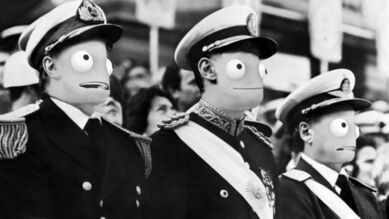
The war between Krome and Zokesia that started in 2110 dragged on for five years. The minor battles at sea prevented either side from establishing any reasonable advantage, and with Zokesia advancing space operations focusing on expansion on Duna, Krome was not seen as a threat. While Zokesians enjoy the highest standard of living their political freedoms are distinctly lacking, and the new Neo-Stahlism ideology of "the people do not need to have opinions on geopolitics" led to the complete control of the Council in political matters. Elections continued to be held, but only military personnel can vote and citizenship is only given to those who enlist.
Forced to sue for peace, both sides agreed to return to status quo in the Treaty of Bravis, signed 17th July 2115.
SERG and Resurgence
The unpopularity of the white peace and 30 years of hardship led to a rise in pro-science parties in Zokesia, forcing the Junta to allow more power and money to go to research and scientific advancement. In 2118, the scientific community banded together in a bid to right the wrongs of Zokesia. The people overwhelmingly voted in favour of the Scientific Exploratory Research Group (SERG) party and after a brief beurocratic struggle with the Junta, and millions of Zokesians protesting on the streets, the party was able to win the legitimacy of the vote and force the Junta to step down.
Independence and Neutrality
Following the Scientific Exploratory Research Group's election, the nation rebuilt and withdrew to traditional roots, growing inwardly. The land healed from years of over fertilization, and factories were updated and made more efficient as technology initially pushed for use in space was utilized on the home nation's soil. The first half of the 2120s were marked by the return of the Zokesia of forty years earlier, when Ella and Kolsonaro and other Prime Ministers led the nation on a path of neutral status and nonalignment with the outside world.
The Long Peace
The nation of Zokesia's nonaligned diplomatic stance throughout the 20s and early 30s. Agreements in world trade rebuilt the Zokesian economy further and closer ties with nations around the Kolus peninsula began occurring, pulling Zokesia from her shell and opening the world to her. The formation of the Confederation of Zokesia instantly created a massive economic trading sphere right at the doorstep, and nations nearby took note and began being interested in Zokesian diplomacy. Phoenia in the east and Orion in the west became key allies over this period, and Zokesia sought active participation in politics in their regions respectively. As the nation's intrest in security of their trading zone, they turned to Nuvastia to make an agreement for economic stimulus in exchange for protection - as the production lines for military aircraft, tanks and ships began ramping up to defend her interests. Inevitably, this would lead to a resurgence for Zokesian Nationalism and would pave the way for the 2130 elections.
Changing of the Guard
In 2126, Ella II, Empress of Zokeisa passed away. The state funeral saw thousands of diplomats, heads of state, and fellow politicians. For the nation, a great loss was suffered with the death of their Empress. The 48 year old Magdalene of house Ward-Vikus was crowned Empress, and in the national elections four years later, Ella's old party, the Zokesian Royal Party, won their first election in decades, behind a bold and firey man named John Kallan Kurrman. With his hand, Zokesia was pulled out of neutrality and began operating actively in the Central Sea and southern Baskay area. The minor action in Gaxinia saw the first stretch of the new Zokesian Royal Navy's legs, but the real test would come in 2129, when the Nautilus Crisis would kick off the largest war in the past 20 years.
Nautilus War
With the breakdown of Gaxinia leaving a vacumn of power in the southern Forseti, the nation of Gallante began attempting to exert control over the Nautilus Strait, claiming birthright over the island. When the nations of Zokesia, Eloheim, Orion, and Phoenia voiced objection to Nautilus' integration, Gallante launched a naval invasion which kicked off a four year war. The nations of the Nautilus Security Coalition pushed back the Gallante landings through airstrikes and naval gunfire in 2130. By 2131, the Gallans were kicked completely out of Castana and a naval blockade was established surrounding the nation. The Zokesian Navy, allready expanding at the time of war, exploded threefold in size, and by 2133 had the largest surface fleet on Kerbin. Naval invasions in the southern provinces were initiated by Orion and Phoenia, supported by Zokesian and Eloheim aircraft which fought bloody SEAD missions to rid the mainland of its dense missile batteries. Over 100 Zokesian fighters were lost, but the move forced Gallante off the southern half of the peninsula and peace was finally struck, ending the war in favorable terms to Nautilus and the Security Coalition.
World Power and Peace
The lessons learned in Gallante were stark, and Zokesia was no longer the neutral and unprepared nation it was before the war. Combined economically with her neighbors into the Zokesian Confederation, the nation and its allies enjoyed boom year after boom year, with record bumper crops, economic output, and social mobility. However, the years of war had taken its toll and the nation picked Zokesian Green Party lerader Herbert Mundarius as the next president. The nation had never in its history ever been so wealthy as after the Nautilus Crisis; and, with the aid of its newly rediscovered allies on the Mun and in the now safe and economically thriving Nautilus and Gallantian Occupied Zones, the nation enjoyed nearly a decade of prosperity as the glimmering beacon of Kerbin. It was looking like the nation would push forward into space, fielding more and more warships on Kerbin and in orbit above, and the newly re-established Wardian Korfu Colony on Minmus was bringing new and exotic resources from high Kerbin orbit into the Zokesian trading sectors. A mild outbreak of ground worms in 2136 in Nuvastia was quickly squashed by the weight of Zokesia and its allies, but sowed the seeds of disaster in the years to come.
The Dust Bowl and Civil War
The Kolusian Dust Bowl
Like the stock market in 2136, the food crop in Zokesia was the third bumper harvest in a row. Record output was still climbing as the nation swelled, even as farmers began reporting losses, due to the high volume of product sold relative to demand. And then, in the Summer of ‘37, high winds from Vanadia carried a dust storm as large as Puge-Tatar westwards. It blanketed all the major crop production on Kolus, and suffocated the already struggling economies of the smaller nations there.
Unable to prop up their subsidiaries like before, Zokesia could do nothing but watch the Confederation states collapse into anarchy - Puge Tatar, Wuste, and Juno all falling into history in less than 6 months. Zokesia herself barely held on, but millions went hungry through the winter of 2138 as inflation and famine set in hard. The once fertile lands of Southern Zokesia were dust; farmers, factory workers and middle class businessmen were begging on the streets for pennies.
Following the years of economic failure, the blame of the mass fell squarely on the shoulders of the Zokesian Green Party - for multiple reasons. The uncovering of documents exposing the cause of multiple failures in the banking systems was primarily the result of a corrupt 'short' dealing which the ruling party either failed to correct or turned a blind eye to. Second, the lack of economic development in the east led to over-farming of the few products which could grow in the eastern plains - bumper harvests and incentive to overproduce via government stimulus to farms meant the soil was getting overburdened without enough time for rotation. Lastly, the government's decision to drag its heels on economic handouts showed a "too little, too late" approach to record low economic downturns, turning a year-long financial crisis into a half decade of slump.
The Zokesian Green party held onto the majority of seats in the Parliament ever so slightly and began, firstoff, by securing the popularity of the old guard - nominating former president John Kallan Kurrman as president of Zokesia, in exchange for the power to sweep legislation through without veto. The beginnings started with rebuilding the sectors worst hit by the crisis - the agricultural and exports. The Economic Recovery Act was passed as a stopgap, with a provision to emigrate Zokesians to the nearly-settled South Foresti, where its unhampered acres of forest & farmland could be used to re-ignite the Zokesian economy. Within a year of the plains initiative, 250,000 Zokesians moved to Foresti for a new life, leaving the unemployment and famine behind. The economy of South Foresti began to grow immensely, as well as the newfound shipping industries required to send produce & lumber back to Zokesia.
In turn, Zokesia began a restructuring of the infrastructure and economic output - turning towards high efficiency renewable energy sources, microelectronic manufacturing and vacuum-safe technologies. The manufacturing sectors of Zokesia, long a holdout of old steel-forged ways of assembly lines, modernized post-depression and automated production made up the gap in workforce as more Zokesians emigrated to Foresti. The high-tech leaps of 'Green Zokesia' went hand in hand with the resource extraction of South Foresti, where forests got felled and replanted in the hundreds.
StahlSieg Defection
The economic recovery of Zokesia was not without its opponents, however. With economic recovery came political reform, and the StahlSieg were increasingly on the outside of political decisions. Approaching the 2140 elections they were nearly nonexistent in key government meetings, and flames of rebellion were stirring in the diehards of the Zokesian Military and SS, as the 2140 budget was slated to slash the once great Zokesian military to nearly nothing - to fund more Green projects, but in their eyes to strip Zokesia of her great power status.
The flashpoint came following the breakup of the Burr federation the Zokesian Green Government was quick to condemn Surnay and begin preparations for war. However, the actions have caused a violent backlash by the StahlSieg, the old right-leaning paramilitary branch of the Zokesian Military. After many operations with the Surns, the SS has made a firm stance opposed to the Zokesian government and now threatens politics repercussion if surnay is declared a hostile enemy. The Zokesian government stands divided as to the next course of action, as the Green Party and the Ss’s political figures argue in parliament, but on the battlefield the SS has made the first move- while the Zokesian military sits prepared but defensive the SS has moved into strategic locations across the Surnish Pirate State, declaring “enclaves” in the port cities around Katrina, of Zokesian-Surnish control above all, and in the state of Juno in Surnay. These city-state areas are now entirely under Stahlsieg control and looks to be a move to establish its own supply and logistics to draw from in support of Surnay should a war start.
The crisis in Zokesia drastically worsened over the next few days, as the ultimatum with Surnay approached, the StahlSieg broke out into open rebellion across Zokesia. The political situation in the capitol went from bad to worse as session after parliamentary session ended in fistfights and shouting curses between the greens and the old guard of right wing coalition leaders, who had now taken the side of the much more powerful Stahl Sieg. It’s leader, Heinz Studer, declared the Zokesian Greens an enemy of the people after a bill was attempted to be passed by greens banning paramilitaries in Zokesia and outright censoring right wing news sources and parties. The final straw in the tension was when StahlSieg General Thomas Wurtz was dragged out of his house in Ward by an angry mob of Greens and hung from a tree to death. The Stahl Sieg quickly turned General Wurtz into a martyr for their cause and in turn tried to rush the Presidential palace, but fierce fighting drove them off before local forces arrived and they were forced to withdraw to the countryside.
The Zokesian Civil War
Over the course of the next week one by one all 10 active StahlSieg units banded together to pledge allegiance to Reichscommander Studer, who had set up his headquarters in the Surnish province of Juno. Reichscommisariat Juno thus became the “legitimate successor state to the Grailreich” and was declared the Second Reich of Zokesia. The Zokesian Greens mobilized the armed forces but many amongst the ranks had defected along with the Stahl Sieg, and only half the remaining forces could be mustered to defend her interests and now apparent legitimacy. In Sur-Krakain and Forseti the borders, sea lanes, and air lanes were shut off to prevent any and all travel in the hopes of catching Stahl Sieg defectors, but rioting and minor coup attempts were occuring in every city in both of the principalities. Then the news that Schrschnell and the Zokesian Navy had completely defected sounded the first shots of the civil war, as the battleships Morser, Konig, and Notilian sailed past the government house in Ezekielgrad firing high explosive 16” shells onto the city. The fleet then sailed through Nautilus and out into the waters of the Southern Sea. It was the final result of years of economic hardship, weak left rule, and lingering pro-Grail ideals that suddenly ignited the nation.
In a matter of hours the most peaceful state in Kolus became a war zone as Stahl Sieg companies and Zokesian regular clashed over the control of the main port city. The Prince of Scheschnell, Wayne II, who pledged allegiance to the SS in the opening stages of conflict fled north to Zok and has been in hiding since, as large parts of the principality fall to pro-Zokesian militias and regular forces. Only a handful of SS troops fight on in the port proper, as the naval units that recently defected from Zokesia fire indiscriminately on the city. The fate of Schrshnell is not known but the fighting has alerted thousands of citizens to the polarizing nature of the struggle, and many are becoming more and more gavinized to the Green Zokesian struggle. It is only a matter of time before Schrschnell returns to Zokesian control, but at a phyrric cost to the citizens of the nation. Stahl Sieg has made themselves very unpopular in the eyes of southern Zokesians but a great number are still dissatisfied with the Greens and refuse to support them fully, neither siding with democracy nor authoritarian military rule.
Zokesian president John Kallan Kurrman said this about the crisis, on Christmas Eve, 2141:
“To the people of Zokesia I send a message of strength in these trying times. Many of us those at home and abroad have felt the repercussions of the treason which has rooted itself out so recently and threatens our very survival. Men and women who sat shoulder to shoulder with you yesterday are now declaring intent to kill maim and murder all you know and hold dear. It was not too long ago that the greatest disagreement between neighbors was the dog had taken a leak where it shouldn’t have. Now, molotovs are thrown from houses next door. This is not the Zokesia you and I know and love. This is an artificial crisis created by the Stahl Sieg - warmongers out to create pain and suffering at anyone’s cost. You all know that for many years greens and conservatives did not get along, and I myself was reluctant to work with the Greens, even after they won the majority vote and began putting their policies in. But we sensible people solved our differences peacefully and continued the tradition of Zokesian Excelence and solidarity. No other nation is like Zokesia in the world - with unadulterated freedom, political liberty, economic success unparalleled, and patriotism above all - standards higher than all and history deeper than any - and there never will be another. The nation has been through tough times, and those abroad are scattered in their homes as far as Sur-Krakain and Forseti, or Bayconn island, but we all sing the same anthem and swear the same oath - to preserve our little nation, for our children’s children too. The stahlsieg and its supporters are not Zokesians - they are foreign thugs hired decades ago in time of need and who have held onto their spot of importance for far too long. We will drive them out once and for all and spill their blood in the name of freedom! Zokesia is and always will be a free land and it is up to all of us, everywhere, to ensure she does not fall. There is no other nation in the world to flee to - Zokesia is the last great bastion of freedom on Kerbin, and her demise will spell the death of liberty for a thousand years to come.”
Battle of Schrschnell
As the war continued into 2142, the front in Schrschnell was driven back closer and closer to the shores - the Stahl Sieg fighting for every house and apartment block as they slowly were whittled down by dozens of Phoenian units. The fighting lasted far longer than anyone in the Coalition expected, with fierce resistance followed by tactical withdrawals deeper into the city. The Stahl Sieg knew they were fighting a losing battle and continued to delay, relocate, and slow Coalition forces until the inevitable occurred. Often, a single company of StahlSieg troops - and in one case a single Rhodie IX - made last stands against company-sized elements of Phoenian mounted infantry and tanks. Fighting completely cut off, surrounded, and alone, these battle hardened veterans knew they would not survive the battle and yet fought on with fanatic intensity. In the end, though, months of street-to-street fighting left scores of heavily damaged Phoenian vehicles and the complete annihilation of the Stahl Sieg in Schrschnell. Every fight was to the last man, even down to the few piers, depots and warehouses on the waterfront itself, where just a few feet of sand separated the SS and their destruction. The fighting ended when the last Rhodie IX "Der Flieger" drove into the waters off the Schrshnell coast and fought a doomed battle against five Phoenian tanks before succumbing to their hailfire. The Stahl Sieg of Schrschnell could not know it at the time, but their legendary sacrifice was what the Reichskommisariat Juno needed - time to build up and take the fight to the heart of Zokesia.
The offensive in Juno opened with a bang - the Zokesians had seen the northern front as a very real threat due to the Stahl Sieg's proximity to the capitol of Zokesia - Ezekielgrad - and had asked for Orion's support in reinforcing the thin northern line from the onslaught of Stahl Sieg troops. The waves of units from Juno, however, sent the Zokesians reeling, and in a fortnight the forces of the Stahl Sieg were on a march to pincer the 100 Orion tanks in the center of the line. Only in a mad dash did they manage to set up a defense of the salient between them and Zokesia, and thanks to Elohiem pilots fighting a near suicidal battle to keep the skies clear the few units remaining could withdraw in an orderly fashion, but as the winter set in the lines became quiet, and at any moment the Stahl Sieg's renewed assault on the only army between them and the whole of Zokesia was bound to come when spring thawed the snow.
Operation Redbuck
The Stahl Sieg's war with Zokesia was not going well. Abandoned by Surnay and finding themselves the last power fighting in Zokesia, the seasoned death squads of the Stahlsieg knew the chances of liberating their homeland under the black banner were gone. Despite the offensive in the north, their enemies grew stronger with each passing day, and the noose of supply and reinforcements to the Coalition was getting tighter and tighter on Juno. Food was in short supply and the fuel and ammunition needed to carry on the fight was no longer reliably coming in from Surnay. A nation that barely supported 90,000 people was now home to almost twice that in standing army, and it was beginning to break the little nation's back. Juno was just a staging base, Studer knew that - it meant nothing to the volunteers who came from across the oceans, across thousands of miles of Kerbin to fight here. They could give it up and fight another day. For all the Stahlsieg's valiant efforts in the south, they could not repeat such a slaughter in Juno. Something had to be done to get the Stahl Sieg out, and fast. Their only ally left was in the north, hundreds of miles away and accross a blockaded ocean.
The operation was codenamed "Redbuck" - Redeployment Directly Bolstering Under Cyrtillian Keeping - and it was a daring plan. The Stahlsieg had no navy left after the Battle of Valenia Straits, and there was no land route to Cyrtil they knew of. An opportunity presented itself when the Zokesians announced the retirement of their aging Thunderchief class carrier, the *Gordon S. *. The ship was big enough to fit nearly the whole StahlSieg army and get them to Cyrtil in one trip, but it was on its way to the breakers yard in Ezekielgrad. The plan was hatched to get the few remaining SS sympathizers in the Zokesian navy to board her under the cover of darkness and sail her to the Mamb, where the SS would drive their entire army and onload. It was ludicrous to believe this could work - the entire army's existence would be placed on the ability to steal an ex-flagship, drive across an entire nation, and then sail through an enemy blockade bigger than the Zokesian navy.
The master forger for the SS, Rudolph Hander, began drafting up fake orders for the *Gordon S. * began writing up fake orders for all SS officers on the Gordon S. - only a handful would be needed since the ship was mostly in the hands of the breakers now. The crew change the night of May 25th saw 8 "Officers" and 20 "Sailors" - all of them SS men - onto the Gordon S. . A notification to the Zokesian navy was also sent, indicating the ship was instead going to be broken up in Schrschnell, where the newly liberated dockyards could provide faster service - this would put the Zokesians at ease if an old ship disappeared out of their port for a few days. It should arrive in Schrschnell in a week anyway, and it wasn't on the active roster anymore, why should they care? Unbeknownst to the Stahlsieg, the Zokesian military was going through a chaotic restructuring, trying to bring imported desgins up to production, and the Zokesian high command could not care less about old equipment - it would have been preferable to sink it to save costs if it was an option in the eyes of the Zokesian admirals - and so the old ship left Ezekielgrad port flying the Zokesian Naval Ensign, headed south.
Three hours into the journey, the Captain, SS-Oberofficier Hans Beck, ordered a turn hard starboard and out to sea. The skeleton night shift meant only a few civilian workers were on board, and the four or five construction workers were more than aware they should not be moving at all - let alone sailing west - and tried to make a statement to the Captain who immediately locked them in the brig. With the ship sailing out to sea and the Zokesians unaware, in two day's time it would be at the Mamb.
The second part of the plan was more tricky. The entire Stahlsieg army - 100 or so Rhodies and 40 support vehicles - had to drive across a now hostile nation and arrive at a predetermined location on the banks of the Mamb where they could be loaded up and sailed out. If this massive column was detected, it would spell the end of the plan and the air power of the Coalition would make quick work of the retreating ground units. the 14th SS. Belasrien would leave first, establish predetermined security checkpoints in Surnay-sympathizing villages, and ensure locals were not aware the SS was passing through. They were local boys, and the people they met were more than happy to see their loved ones and fellow countrymen return, under the auspices of "a fresh start" and were more than happy to host them in their homes and look the other way if a few roads were blocked off for "Construction work" that the alleged ex-SS men were going to undertake. The front in Zokesia had not moved in months, and the Zokesians were beginning to plan an assault on the line, so the Stahlsieg had to keep up the illusion of a force. 20 Rhodies and a dozen support vehicles were ordered to drive at full speed back and forth, radio chatter intensified, and maneuvers by convict legions digging fresh entrenchment and fortifications proceeded the weeks before the operation. The buzz caused the Zokesians to believe the Stahlsieg was still active in the area and kept their heads down in the planning of a counteroffensive. The move of the Stahlsieg occurred at 10pm, May 26th, and the column arrived in northern Drekevak by sunrise. Concealed with camo netting and in deep wooded forests that characterized Drekevak, they were perfectly concealed form areal observation. They continued the next night, and by the morning of May 28th they had reached the beach they had to be picked up on. Their hearts rose and men cheered when the giant grey silhouette of the Gordon S. came into view around the cliffs of the Mamb.
The onload took eight hours, and by the end the Stahlsieg was getting worried their ruse might have been blown. Local fishing vessels and a Zokesian cutter had spotted the Gordon S. but had not made radio contact. Now time was their enemy- and they still had to run the Kathern Blockade. The final deception took place the night of May 30th and 31st - the two nights in Kathern waters. The blockade had been impending but the Stahlsieg also knew that two Zokesian vessels had been granted access to Bayconn island to patrol Zokesian interests in the area - and so under the new callsign BB-01 Baskien, the Gordon S. challenged Kathern vessels at the maximum distance possible - hoping the foreign vessels did not know the difference between a carrier and a battleship. The route taken was southwest and sailed along known Zokesian military routes - and luck was on the StahlSieg's side once again - the understrength Zokesian navy was without coastal patrol vessels, and unbeknownst to the Stahlsieg the entirety of the fleet was deployed away from home waters save a single Thunderking carrier - there was no one to challenge their route to Cyrtil. The Gordon S. landed in Southern Cyrtil, with the Stahlsieg High Command, 68 Rhodie MBTs, 12 Badgers, and 22 Chaparaal AAA trucks - and a fully functioning fleet carrier. The operation was a complete success.
The Zokesians discovered on June 1st their carrier was missing when it failed to report into port in Schrschnell - a massive search was done by airborne forces, but it was too late. The Zokesians were furious and demanded the heads of the naval forces on watch that night - only to find that there were none on record, since there was only the CVN-21 Emperor Zeroth in Zokesian waters, and she was down in Schrschnell, not Ezekielgrad. The Zokesians immediately ordered an offensive into Juno, where they discovered only burned out tanks, destroyed infrastructure, and abandoned positions. The Federal State of Juno was reliberated on May 10th, but the Zokesians had missed the opportunity to fully wipe out the last of the Stahlsieg, thanks to the success of Operation Redbuck.
The Strelkan Crisis
The relative quiet in Kaapdorp following the Zokesian Civil War was abrupty broken in early 2144, when the several hundred ethnic Vocavians and Strelkans began blockading roads and city centers around the capitol city of Slen. The Zokesian governor, who had fled following Stahl Sieg takeover three years prior, was nowhere to be found The Strelkans claimed to be upholding "Volkstaadt Kurtzland ideals" and began throwing factory owners off the top floors and into the streets below. Multiple reports of violent mobs of Grestinains and other minorities clashing with the Strelkans further added to the chaos unfolding.
A dozen Strelkans and Tekkians set up a microphone at the governor's estate and proclaimed "Die Slen Quattrostadt" - The Four Nationalities of Slen - Zokesian, Tekkian, Strelkan, and Aenian. They regard the Fourth State as a successor to the legitimate Strelkan government of South Kafrica.
Their Rallying Cry - "Grestinians Get Out! We hate your Greeness! Go back to Diosca, Kromans! "
The Zokesians living in Slen were a minority as well, and had for the most part been sheltering in place awaiting local military forces to establish the peace once again. The Zokesian 2nd Fleet was wrapping up its Tau Sea tour, and had been diverted to Kaapdorp to try and re-establish the peace.
The year long guerrilla war in Kafrica finally drew to a close in 2144, with the fall of the Free State of Jackson to the Stahl Sieg and their Strelkan sympathizers. With the renewed nationalism in Slen, the Strelkans of Kafrica banded together with the last holdouts of the Stahl Sieg in Kafrica to push Laveska to the sea in the east, before turning 180 and securing Jackson as the Orion army bore down upon them. Their war was slow and through terror, arson, and gunfights in the streets, but ultimately the final victory was assured in one culminating battle, which proved successful even against the Coalition airstrikes directed against them. The Strelkan Quattro of Slen officially threw its support behind the new Strelkan Suid-Kafrikaaner Staat and the reorganization of the area had begun. The borders remained fluid and the battle was far from over, but for the first time in decades Strelkans had once again a homeland in Kafrica to call their own, though Grestinians still made up a majority of the population.
In 2145, the paramilitary group the Stahlsieg once again emerged in Suid-Kafrica, as the CORR-01 virus began wreaking massive havok accross the nation. Hospitals reported violent outbreaks of infected patients, which broke into the streets and started riots. The national government was slow to react and many anti-strelkan demonstrations took place, despite warnings of gathering. Several of the protests erupted in violence, bloodshed, and mass havoc, though it was not determined if they were a result of the virus, political strife, or both. The Stahlsieg, which more or less acted as the interim defense force of Strelkan Suid-Kafrica since 2144, issued a formal re-conscription of its ex veterans from 6th SS. Braviserstgeboren and the survivors of 20th SS. "Ryoma Pasternak" Crytilen from the Zalkent conflict and began sweeping the streets of any non-Citizen that is out after curfew. Several clashes have resulted in the summary execution of hundreds of Grestinian protestors, though the Stahlsieg maintains they are doing "only cleansing of virus-laden individuals". Hospitals are guarded 24/7 and secret executions are taking place of anyone thought to be carrying the virus once checked in. These "Blood Banks" had been mostly avoided by locals now that the truth is coming to light, which had caused more infected to stay at home, causing arson, murder, and mayhem in the suburbs. APCs and Badgers patrolled once peaceful Strelkan communities, as the occasional home burns or gunshots are heard. The nation was in chaos and the government's best attempts to keep people fleeing began to fail.
The Zokesian government, while decidedly anti-Stahlsieg, moved to enforce a blockade of any and all commercial ships or aircraft leaving the Strelkan borders. Several hundred refugees were killed as their escapes were brought to a blinding halt by Zokesian warships opening fire as they refused to turn back. Zokesian advisor Kotter Skorzen, former SS Obersturmbanführer, was sent in under heavy biological protection and armed guard to try and discover the root of this disease in Ophir.
In 2150, Winslow Harding gave the first official statement of his term on the Strelkan crisis. In his speech, he announced that the situation was far too unstable for the newly formed Arcovii-Zokesian government to ignore, and urged leaders to find a solution. Democracy and right to universal suffrage were paramount to this transition, he said, stating the lack of representation of the majority Grestinian population was a gross stain on the nations record. Arcovii-Zokesia had reached out to Grestin to attempt negotiation for a solution headway was slow going. The declaration by Arcovii-Zokesia's president led to a referendum which resulted in majroity Grestinian government. The Grestinian People's Liberation Party, or GPLP, led by Pastor Erik Thanner, has begun sweeping reformation of the government - first and foremost with the rebranding of the nation a united nation for all Kerbals, Grestinian and Strelkan. The Strelkan minority, which has held power for over 6 years, has passed the torch, though not without pushback by reactionaries in the province of Chikusinal. The majority population there is Strelkan, and in a vote by angry populace in the government house, the citizens there voted to form their own microstate of Free Chikusinal.
Kallan Era in Zokesia
In 2145, incumbent president John Kallan Kurrman was elected to his second consecutive and third total term in office as Zokesian President. Under his seasoned leadership and steadfast resolve, Zokesia soundly defeated the Stahl Sieg at home and abroad, defeated Surnay and avoided war with Crytil, and established new colonies and lands of opportunity for Zokesians to settle outside of the home country. Hout, Slen, Strelkan South Kafrica, and Syx island were all added to the national crown, and the tourist industry and commercial flights between the interstellar colonies increased, driving the economic boom known as the "Kallan Kurrman Forties". In his inauguration speech, John Kallan Kurrman once again promised to put the nation's interest first and foremost and to push for more economic reforms at home, with the aim of giving back to the people and improving quality of life across the nation. The ripples of the civil war still burn in some parts of Schrschnell and Juno, and Green party protests were prevalent in major cities, which John Kallan Kurrman said he understood and that the nation would have to take time to heal once again before it can be in agreement. Political division is strong in Zokesia but the charisma and reliability of John Kallan Kurrman has continued to reinforce the Royal Party's reputation for this generation of voters, as the implementation of Green policies as well as promotion of the armed forces saps power from the platforms of the Socialist Party and Green party.
In 2146 Zokesian intelligence picked up the faint signals from the old Federal Colony of Rhodes, thought destroyed long ago by the collapse of a terraforming project on Duna. The colony once again re-established contact with the home planet after nearly 6 decades of silence. The explanation given by the colonists was the knowledge of how to repair the dish and align it with Kerbin was lost with the destruction of the main computer database during the crisis, and through sheer trial and error over decades they were able to rebuild and realign it thanks to a brilliant scientist who was born after the colony's founding, Robert Maccanan. Maccanan had quickly established himself as a sharp and resourceful kerbal, and moved up through the colony's ranks untill he became the Director of Colonial Development, where he began work on re-establishing contact with the home country. The colony was at 98,000 kerbals at the time of disappearance, but now has over 1.6 million Zokesians and Aenians living in vast cities just under the Duna surface.
Since its founding, the colony slowly expanded underground, and as the Duna atmosphere moved massive amounts of dust over the old launch site, much of the above ground base became invisible to the sensors and arrays of other local colonies. Some smaller outposts knew of and trade with the colony, but was inexplicably never reported to Zokesia.
It was found out later that the colony purposefully ignored communication for 60 years because quote "We just didn't want to have to pay taxes."
Imperial Reclamation
When the first signs of the UIF return coming in the form of massive spacecraft from Eve, the Zokesian government went on high alert. The Imperial Continuity Army and Nautilus-Laveskan Commonwealth soon came to a summit to reform the UIF and reclaim their homeland from the Arcadian Ultranationalists, who had led a brutal anti-imperium propaganda campaign for decades in the former Aenian states. War broke out in 2147, and soon all Zokesian naval assets were directed towards the Tau sea to support the UIF's naval assets in the region and contain Arcadian sea assets, in preparation for a land campaign on Arcadia proper.
Sahren Intervention
In the opening days of the war, a whistleblower in the Sahren high command informed the Zokeisan Air Force some fifty advanced fighter jets were going to be sent in secret to support Arcadia, to test them in battle following their production. Sahr already had volunteers fighting against Arcadia, and the reasons for this defection were unclear; but the reaction from the air force was timely and swift. Sixty Zokesian jets from 3rd and 4th Air Wings - made up of Z-80s, Kaminaris, and F-52 Kargadans, took off from Schrschnell as the Sahren force assembled to fly east. Slashing into the formations, the zokesians downed nearly every single jet to a man, while suffering only five losses of their own. The Sahren government objected and claimed Zokesia violated their airspace, but the international community turned away from Sahr when it was revealed they were sending said fighters to fight the "evil in our time" - The arcadians.
Operation Carolinas
At 00:45 the night of February 12th, 2148, the combined forces of Zokesia, Laveska, and Imperial United Front launched Operation Carloinas, a mission to strike at the island of North Point, Arcadia. The operation was launched primarily from Sur-Krakain, with support from the Combined Fleet, consisting of Belkan, Laveskan, and Phoenian naval assets.
As the Combined Fleet set sail to hunt down the Arkadii-Soyuz task force, the northern fleet left harbor and sailed for two days before splitting off into two groups - the CV-21 Emperor Zeroth and the CV-04 (UIF) Fort Grace rendezvousing directly north of the island, with an escort force of four Laveskan destroyers. The rest of the fleet turned south, a combined force of eight Laveskan destroyers, four Zokesian battleships, and thirty-two Heavy Landing Craft, with the Zokeisan 1st and 2nd Marine Divisions aboard, the 3rd Marine Support Division, the 12th SS. Grailjungend, 14th SS. Belasrien, 17th SS. "Morado" Nautilen, and 19th SS. Arkerien - 180 Main Battle Tanks and 75 Support Units in all. To the South of the invasion fleet, the 1st Belkan Fleet shoots the gap of North Point and Arcadia main, acting as a quick reaction force should large-scale fleet action occur in response to the landings. Stationed just 40km from the landing site, the 1st Belkan Fleet will respond to any surface engagement the convoy should come under, and prevent reinforcement of naval assets to harass the landing force once it arrives onshore. As the force began bearing down on the island, the destroyers took up flank positions port and starboard, in line astern, and the Zokesian battleships in turn made another line astern on the starboard side of the landing force. Steaming due south, the four lines went - destroyer, battleship, landing craft, destroyer. These were the most dangerous times for the force as detection meant a surface engagement before the landing craft were in their final run-in ashore. Above them, a dozen anti-ship Kargadans from the carriers were on station, as well as another dozen on combat air patrol.
Unbeknownst to the Arcadians, the operation may well have been detected earlier - but from out of orbit, the Munar Marines dropped from orbit like fiery angels onto the rocky mountains in the northwest of the island, where a key long-range radar site overlooking the Tau sea was built. Taking the radar dish was their priority, as it would leave Arcadia blind to incoming threats, as the island blocked the mainland's early warning radar from the northwest sector of ocean. The marines landed under sporadic ground fire and managed to secure the radar site, but the defenses of the island were alerted and surprise had been lost. Now, Arcadian high command knew there was a threat on North Point and was ready to respond, early warning radar or not. Upon landing on North Point the UIF Marines were immediately engaged in a heavy battle with the island's defenders. Their primary mission, the radar tower overlooking the Tau Sea, had been eliminated after several hours of fighting, and now the task was upon them to head south and attempt to take the hard surface of NAS Stihland, the largest runway in 100km, situated in the southern part of North Point. Fighting their way through was hard going, and they would not make it without the reinforcement by sea.
Zokesian Fighters launched decisive strikes on Arcadian ships eliminating the threat to landing. The battle of North Point saw Zokesian and Stahlsieg tanks along with UIF Space Marines destroy all resistance on the island, backed up by a decisive battle in the air which became known as the "Great North Point Turkey Shoot." Zokesian and UIF aircraft then proceeded to hunt and destroy the remaining Arcadian fleets south of North Point in the 2nd Naval Battle of North Point, and the battleships "Rommel", "Kercia", and "Osyrus" engaged the remaining Natalia-class battleships, sinking three at the loss of three Laveskan destroyers. In 180 air-to-ground and 140 air-to-air sorties, Zokesian and UIF fighters had accounted for four battleships, 110 torpedo boats, ten OPVs, an arkadii-soyuz carrier, and over 110 Arcadian fighters. they had suffered just 20 fighters lost in the process. North Point was securely in UIF hands once again and the pride of the Arcadian navy had been broken. The Zokesians had lost one battleship and one damaged, and the Laveskans had lost three destroyers.
The Fall of Arcadia
Resistance was still fierce on the continent of Doren, as IUF and Phoenian armies swept into Arcadia. Fierce tank battles in Konig, Amber, and Gagriel raged as the air war was won by Imperium pilots at heavy losses on both sides. On the southern flank, a great bridge was built to cross the river that marked the boundry of Aenia to the north. A brave crossing by Zokesian volunteers, SS divisions, Sahren and Phoenian troops opened up the front and within mere weeks the Arcadian war machine was in full collapse. With IUF space marines landing in the capitol of New Comberth, the flag of victory was raised above the burning city, but only after heavy coalition losses. Zokesian forces returned to their ports in Sopost and Schrschnell, the war over.
Stahl Sieg Pardoned
In an unexpected and controversial move, John Kallan Kurrman moved to reconcile the civil war's still open wounds by officially pardoning the 5 Stahl Sieg Divisions that did not break away from Zokesia during the Civil War. Many in Zokesia felt that the whole of the Stahl Sieg organization was to blame for the defection and that their alleged war crimes were to be blamed on the entirety of the group. However, the still active units made up a notable force around the globe, many of which were still Zokesian loyalists and had signed up to defend their nations and Zokesia from communist and socialist menaces. Now, with the outbreak of war against Arcadia, they once again felt a need to approach Zokesia and offer their services to free the peoples of Aenia and Gagriel. Fearing their rogue status may lead them to fight for the highest bidder, the Zokesian president knew he had to make amends before he faced a second insurrection down the line. John Kallan Kurrman put those accusations to rest with the stroke of his pen.
Outside the Stahl Seig barracks complex at Nautilus, a crowd of civilians, Zokesian Sailors, Soldiers, and Aviators gathered to watch. 200 Stahl Sieg troops, from all nations - from Veiid to Kolus, Doren and Firesvar - were in perfect formation behind their honor guards. At precisely 11:45 on May 11th, 2149, each of the 5 Stahl Sieg honor guards - 11th SS. "Gunnar" Königgrätzer, 14th SS. Belasrien, 17th SS. "Morado" Nautilen, 18th SS. NeuCom, and 19th SS. Arkerien - lowered their banners before the President of Zokesia. John Kallan Kurrman gave a short speech:
"The healing process is a two way street - you have shown your loyalty to Zokesia and the Republican ideals we hold, and now it is time for the people to likewize show the spirit of Zokesia and its values of compassion and forgiveness. Together, the nation and its warriors can unite and find peace at home and abroad."
Restoration of the Confederacy
In 2149, following the restoration of the UIF as the rightful successor of Arcadia, Arcodovnian and Zokesian officials came together to tighten the bonds between their nations in the Zokesian Confederacy. A new draft of the Articles of Confederation were established, and were officially amended by unanimous vote in the Zokesian House of Lords and Arcodovnian Senate, to unite under a common banner. The nations of Zokesia, Schrschnell, Wardia, Drekevak, Juno, Arcovdonia, and Carsodonia united to form the Zokesian Confederation. Millions rejoiced as allready close ties on Kolus grow nearer.
Turmoil In the Desert
John Kallan Kurrman was the most esteemed politician in Zokesia in 2149. His knowledge and 30 years of experience in governance were immesurable - his two presidential terms influential and his leadership in times of strife and crisis steady as a lighthouse in a storm. But he was getting old. He felt that now, on the evening of the coronation of the new Arcovii-Zokesian Confederacy, it was time to announce retirement. In his farewell speech, he announced he would put his endorsement behind one of his closest political allies and proteges, Vice President Winslow Harding. The reigns of governance would continue down a bright future, he said, if the nation and the Zokesian Royal Party put their faith in Harding. The 2150 Elections resulted in a resounding victory by Harding, but from day one in office it was clear Harding was no carbon copy of John Kallan Kurrman. He immediately announced his support for all Kerbal Rights in Kafrica, issuing an ultimatum to Suid-Kafrica to solve its rampant race riots or face embargo. The resulting nation of Strelka-Grestinia was held together by duct tape and string, and it wasn't long before Chikusinal broke free as a refuge for Strelkans in Kafrica. Postwar military cutbacks also left much turmoil in the economic sector, and the unexpected pushback from Trans-Vanadian natives resistant to the Confederation put strain on the peace within Arcovii-Zokesia.
The most dramatic event by far the sudden and decisive termination of the entirety of Stahl Sieg operations. Leaving in the middle of the night, the most feared paramilitary force on Kerbin removed its presence in Kafica, sensing the writing on the wall with the new Grestinian-inclusive government, had elected their assets were more useful in other areas of the world. The immediate result was a massive strain on the Kafrican police, as rioting became worse and the economy began stumbling as a result of increased prices from goods shipped from Zokesia.
2155 Crisis
Winslow Harding's unpopularity began in the minor recession of 2152 when economic sanctions were placed on the Strait of Foresti to protect against terrorists trying to infiltrate Laveska. For Arcovii-Zokesia, this created negative relations with multiple nations as well as economic issues, as the tide of goods from Baskay was cutoff. To make matters worse, the use of the Stahlsieg in Trans-Vanadia angered many in the Confederacy and for a while it looked as if the nation would not hold together, as paramilitary teams swept house to house and village to village to suppress the vanadian tribals. In 2154, the Zokesian Green Party officially disbanded, and a more radical Arcovii-Zokesia-Socialista was immediately created following the combination of the old, liberal Greens and the farther left Sovie Worker's Party. Winslow Harding was urged by his cabinet members to declare this party dangerous and illegal given the history of socialist groups in Zokesia, however he decided to take no action and allow them to run in the 2155 elections, thinking their ideology was baseless.
What occured in the 2155 elections was nothing short of chaos. Unexpectedly, the socialists amassed 450% more votes than anticipated and took 40% of the general vote, to the Royal Party's just 26%. The Stahlpakt made a resurgence as well, splitting the conservative vote between the Royal Party and themselves, taking 20% and otherwize ruining a clear majority for the Royal Party. The Farmer's Coalition sided with the Royal Party as usual and only recieved 8% of the votes, roughly the same as the Carsodonian Liberal Party, which had made a niche championing worker's rights and conservative values of free trade and decency in Arcovdonia and Carsodonia with limited success. The Zokesian Royal Party was quick to claim fraud, as the Socialists appeared to win in counties with margins of upwards of 95% votes solely for their party. In Trans-Vanadia, Winslow Harding wasn't even on the ballot in some places and gross negligence of security left some nonpartisan groups claiming the electronic voting machines were old and just asking to be hacked by a foreign power.
Since no party acheived over 50% majority, according to the Zokesian Constitution, a coalition must be formed by the winning parties and a vote will be held for President on February 20th. It is unclear if the Socialists will be able to wrestle enough votes for a majority government or if the Stahlpakt will unite with the Royalists and Farmer's Coalition to usurp the socialists in the election. The results have caused unrest through multiple parts of Arcovii-Zokesia, and has highlighted the issues of the nation's domestic policy when so many demographics live under the same umbrella of democracy.
With the runoff vote deciding the fate of the Zokesian parliament, the current lame duck republicans have compromised with the Socialists to lock Stahlsieg out of power in Zokesia for five more years. Winslow Harding gave up the presidency to Mitchell O'Till, the old leader of the Zokesian Green party, a politican known to reach accross the aisle for dealmaking, and Winslow Harding assumed Chancellorship. The Stahlpakt walked out of parliament following the vote, and as a result lost nearly 50% of their seats to absentee votes.
The first order of buisness from Mitchell O'Till was to issue an ultimatum to Belka, to surrender the island of Soltem or face military consequences, following their repeated inablility to recover from the finantial crisis sweeping the nation. The "Imperialism" Of belka, according to O'Till, was nothing short of a second Orion Empire and must be stopped at all costs.
Zokesian Centennial Celebration
The nation of Bosmyth and Northern Zokesia was in celebration for the full month of February in 2157, for the 100th anniversary of Unification day - when the nations of Bosmyth and the governments of Northern Zokesia and Neo Zokesia united to form this great Republic. From every building on every street in every town, hamlet, and city of Zokesia, banners flew out - the Green, White, and Blue of the nation - adorned with banners from all woks of nation and province from whence the Zokeisan people hailed from - the streets of Bayl washed in light blue in Schrschnell colors, Arcovdonia, Carsodonia, and Vanadia all raised the Zokesian Jack over their state houses. In the capitol of Ezekielgrad, every car on the road displays a small Zokesian flag, and the colorful bunting of the nation's tricolor spans every upper floor of businesses', government buildings, and factory rooves.
In the cathedral in the center of old Ezekielgrad, where the unknown soldier lies, the heroes Francisco Grail and Admiral Fournloke are buried, and the documents of state are held beside the Altar of Freedom, there was much celebration. Thousands gathered inside to sing Zokesian hymns such as "Land of Hope and Glory", "Marching through Sanctum", and of course the anthem, "Zokesians Never Die". Their music rang out into the streets, and the largest military parade ever was held, with thousands of troops marching by in dedication to those who fought and died in the Zoke-Sovie War, the Doren war, the Arkadii-Zokesian war, the First and Second Great War, the Zokesian-Kroman war, the Nautilus Crisis, and the Reclaimation of North Point. Over the city each day flies hundreds of Zokeian fighters, bombers, and attack aircraft in tight formation - plumes of green, white, and blue smoke coming from aft as they fly by in Victory formations. The aircraft which have guarded the air for a century remain aloft for the ceremonies, as other historical aircraft including the GU-1 Gull, B-100 Blackout, Z-70 Valkyrie and Mallard M2 flew over select airshows. The modern defenders of the nation - the Kargadan, Kaminari, and Z-80- flew en mass from the airbases around Zokesia and offshore from the carrier Emperor Zeroth.
Every ship in Freetown harbor flew the battle flags of every color under the Zokesian flag - the warm water reflecting the green and blue of the flag perfectly. The Zokesian Northern Fleet, moored out in the bay, got up to steam, flying their colors past the counting house and Market Street, firing off a salute from their mighty guns for all the beachgoers to see, before turning and sailing west with a crowd of smaller yachts and sailboats wishing them fair sailing. The Empress herself, Magdalene I, was there to dedicate a wreath to those fallen in North Point. Her presence and beauty in the shipyards brought thousands, and her words of unity, promises of freedom and dedication of thanks to the people of Zokesia were heartfelt and broadcast to the entire Confederacy.
For a century, the upholding of the ideals which all Zokesians hold dear in their hearts - life, liberty, and freedom - has been the paramount goal of the Zokesian state. Through decades of diplomacy and conquest, the nation has expanded across Kolus, from the western coast of Ezekielgrad, where millenia of Zokesian culture has grown and risen, to the eastern fringes of untapped timber and oil reserves which supply the nations' mighty industrial cities. Towns that were mere hundreds of people at unification are now bustling cities, full of tech companies and fine art museums. Zok, the small village where the conflict for freedom began, is now tenfold as large, and the old battlefields which saw countless operations against rebels, bandits, and vagrants in the east have been brought to quell under the banner of Trans-Vanadia and Carsodonia. To the south, the principalities of Schrschnell and Kothen, once barren and fallow from the destruction caused by Sanctum, have become the model states, with the largest cities beginning to rival Zokesian cities themselves. The port of Schrschnell, once just a sandy beach in a cove, is now the largest shipyards on the continent, servicing hundreds of ships a month and providing unlimited trade to the rest of Kerbin. The now powerful nation of Arcovdonia, Zokesia's closest ally on the continent, built out of the ashes of strife and warfare, a shining beacon of democracy and mercentalism. The budding colony-state of South Foresti, from a barren steppe to a nation powerful and respectable in its own right. Sur-Krakain, Chikushinal, the states far abroad of Zokesia but whose people still fly the tricolor on the streets this month, remembering their heritage and Zokesian roots. Arvene, the youngest of the Federal States, bright and rising in status under Zokesia's careful, nurturing eye. The island of Bayconn in the north, the ancestral homeland of the Zokesians, is the most sacred archeological site of the entire nation - with prehistoric Zokesian structures still being visited by millions per year. All these places now rise and sing in one voice, the anthem of our nation! "Zokesians never die!"
For the rest of the world, the month of February may not have held special meaning. But to the millions living in Kolus under the protection of the Zokesian Tricolor, a special place in their hearts lies the month of February 2157. One hundred years the banner has waved, ever since it was first thrust above the little church in the center of Zok, where the brave volunteers swore independence and freedom was fought for and won by a few good men. The heroes of the Zoke-Sove war sparked the rise of the great Republic and shall forever be enshrined in the annals of our history. The thousands of years of Zokesian pride, nationality, and values carried forth for another centruy, another generation born and celebrated, another youth grown up to write their own chapter in the ever lengthening book of Zokesia's story. Long may Zokesia stand.
Twilight of the Kerbin-centric Sphere
This is a non-cannon filler to bridge KP 2.5 and KP 3, a period from 2160-2200.
The Troubled 60s
The election turmoil of 2155 led many to believe Zokesia was once again on a backslide, its alliances shifting with the new crisis forming around Belkan Soltem. As Mitchell O'Till had warned would happen should Belka annex Soltem, Zokesia was embargoing Belka and mutliple Veiid nations were backing them in solidarity, with the SFRK and Hartfordia counter-embargoing Zokesia as a result. The tensions rose for years untill in 2160, the sliding poll numbers of O'Till led to a fierce political debate with a newcomer to the political scene, Jack Fournloke Kurrman. Jack Kurrman was the son of the heroed president John Kallan Kurrman, and served honorably in the Zokesian Navy in the battle of North Point, where he steered his landing craft within a hundred meters of the enemy to bring the fight to the Arcadians. Now, his popularity and warm energy brought many former Green party voters over from the more radical Socialists, who were losing their footing and platform under party splits. Running for the Zokesian Royal Party as his father did, he won in a noticable fashion and aligned the new breakaway Greens to his side to form a coalition government to ease the tension accross Kolus.
In 2162, under pressure from allies in the more hawkish Royal Party, Jack Kurrman greenlighted a plan to invade Soltem using refugees from the island and other former Imperial Union states to liberate the nation from Belkan influence. The invasion required Zokesian air support in the form of the Royal Navy, but at the last second Jack Kurrman decided it was too risky and feared all out war with Belka, and so denied the air support request. Unsurprisingly, the now infamous "Bay of Kromans" fiasco internationally humiliated Zokesia for a time, and were forced to continue the cold war against Belka that had been ongoing since 2155.
Not long after, Jack Kurrman was assasinated when his motorcade passed through Schrschnell on a visit to the state's capitol. The lone gunman was arrested, but before motive could be found he was in turn gunned down by Henry Greenheart, a pro-Jack Kurrman businessman who vowed to avenge his president. Jack Kurrman became the first Zokesian president to be assasinated in history. His Green Party Chancellor, Kerbolt Van Hart, took over and continued many of the policies Jack Kurrman envisioned, including a return to large scale space exploration and a quest to land on Eeloo before the end of the decade.
Burning Sands
The Pan-Vanadian experiment had failed horribly. In the years following the unification of the great Kolus desert by the Pan-Vanadian Commonwealth, the nation had experienced terrorist bombings, crime and corruption almost from its inception. The Pan-Vanadian government operated by local provincial leaders meeting in one Vanadian Council, but few could ever agree with one another. Those with oil and mineral rights horded them and refused to share with those less fortunate. Those with water shared but quickly became hostile when the oil and mineral producing governances attempted to seize rights through land buyouts. The great inter-government fighting reflected in the streets and cities of Pan-Vanadia, and as the 2160s waned, despite the efforts of the Zokesian government to solve or quell the strife, the Pan-Vanadian commonwealth slipped into tribal warfare once again.
Around 2164, similar strife occured in the Nuvastian Republic, with fighting breaking out for control between the pro-Aontas Bastian Confederacy and the Nuvastian ethnic majority. The fighting reached a boiling point in 2169 when a sinkhole caused by a suspected dirty bomb razed the Nuvastian capitol city, throwing the state into chaos.
Kerbolt Van Hart did not run for re-election in 2165, and was replaced by Zokesian Royal Party statesman and veteran General Thurmond Gratz took power.
Isolation and Growth
Contrary to the fears of many anti-Gratz politicians, the general did not pursue war with Belka or any of the nations it had embargoed. In a historic peace summit in 2167, the nations of Belka, Zokesia, and SFRK agreed on The Treaty of Soltem, in which Zokesia would stay in its sphere and relinquish patronage of Arvene in exchange for Belkan de-armament in Soltem. The power vacumn left in Zokesia's exit wake caused the nation of Arvene to enter a recession, and as SFRK and Belka wished, left it weak for conquest. Foran came to the aid of Arvene, but the war dragged on for years as Veiid broke down into full scale war. Zokesian cargo Albatrosses flew the last citizens out in 2169, marking the end of Zokesian influence in the region.
In the period following the Zokesian pullout in Arvene, focus was shifted toward spacefaring travel and scientific development. Leading this charge was the Zokesian Centrists, also known as the Cents, which first ran in 2170 and succeeded in achieving a 26% vote accross the Confederacy. General Gratz was still the President, but their ideological push toward non-interventionism and self-reliance led many to join their side, and as 2175 came about they won a narrow election, 44%-40% against the Zokesian Royal Party. In coalition together, and with Cent leader Goose Hillrole in charge, the Confederacy sought greater investment in its offworld colonies.
Sunset in the Desert
The surviving members of the Royal House I'l Sil of Puge-Tatar returned to Wardia in 2179 to guide the troubled state in pushing back the violence that was stemming over the border from Pan-Vanadia. With funding from the Zokeisan central bank, the new Wardian Puge-Tatar hired the Stahlsieg once again at the lament of the Zokesians. The Stahlsieg enacted a great campaign of cleansing accross Nuvastia and Pan-Vanadia, initially sweeping accross the great deserts in five long years of fighting before ruling the provinces with an iron fist of terror, collecting taxes on bloody raids from town to town. By 2196, the state of Greater Puge-Tatar had been formed and stretched 50km east and 40 km north of its old borders, and its influence reached deep into the heart of the desert. On paper, the Zokesian Confederacy still controlled the Kolus desert, but many tribes answer to either the Stahlsieg, the Putaryans, or Zokesia, but are mutually exclusive. Trade convoys are armored and villages are walled to prevent raids, and much of the Zokesian national guard is stationed in the desert to keep trade open to key cities. The nation of Carsodonia, now isolated from the rest of the Commonwealth, fell into the sphere of Aontas and gradually receeded from Zokesian political circles, officially declaring independence in 2184 without fioring a shot.
In 2085, Empress Magdalene Vikus-Ward passed away peacefully at the age of 84, after 58 years on the Throne of Zokesia. She was loved by millions accross the confederacy, and as with her mother, she was given a state funeral after a journey accross Zokesia, giving her loyal subjects a chance to say goodbye one last time. She was succeeded by her daughter, Elizabeth Vikus-Ward, 43, and her surviving son, 29-year old Maximillian Vikus-Ward, who was coronated and became Emperor in a massive event in the old Cathedral in Ezekielgrad. Maximillian has been known to be a traditional man, studied in the old historians of the day, and a devout follower of the Church of the God-Emperor Vikus, attending mass twice a week and showing up at many charity events. His greatest dream is to, in his words, "Follow the footsteps of my Grandfather and kindle the spirits of Kerbin into glory."
Zokesian Stars
The Federal Republic of Rhodes on Duna expanded tenfold in a decade, and the allready booming Wardian Korfu was becoming nearly as big in population as Zokesia herself. Now joined with the former Imperial Union colony on Minmus, Wardian Korfu became the center for mining, banking, and economic growth amongst the stars, the position of Wardian Korfu as the Confederacy's gateway to the stars saw it become the most advanced colony in the system, with shipyards and factories dotting every spot of land on the moon. vast Ice Factories shipped water offworld, and the other planets of the Sol system flourished on the new frozen currency. The Esian Principality of Eeloo was founded in 2188, leading to a new source of Ice and trade. Many hailed it as the "new Wardian Korfu" as it was seemingly the gateway to what lay beyond - the star systems outside of Sol herself.
The final elections before the end of the 22nd century saw the Zokeisan Royal Party take charge once again, following multiple terraforming attempts on Duna failed at the cost of trillions of Thalers. Midas Van Tollen was elected on a platform of reform and return to Kerbin-centric thought, as many issues back at home not least of all the Pan-Vanadian tribal conflicts spurring the vote in his favor. Following meager success, at the dawn of the 23rd century, the polls looked to swing away from the Royal Party once again. However, in an unexpected move, His Majesty declared, taking a page from the famous Francisco Grail, "If Zokesia is to be, it will be not a World Power, but a Solar Power - Or not at all." With this, he quickly outlined a radical plan to modernize the remaining Kerbin territories of Zokesia to begin the transition to a truly spacefaring peoples. What his reign will do to realize this goal is unknown, but with the backing of Zokesia's longtime ally the UIF, anything could be possible as the nation enters this grand 23rd century.
Gallery
